In 2023, Andreas Giesen detailed RISE‘s work to The Last Voyage of the Demeter. He then transitioned to working on Nyad.
How did you get involved on this series?
We worked together with Lisa Joy, one of the showrunners of Fallout, on the dystopian movie Reminiscence and on Westworld with Jonathan Nolan and Jay Worth.
Of course, we were honored to be involved with Fallout from the beginning.
What was your feeling to be part of such an iconic franchise?
Excited and a little nervous! Because there are already lots of books out there that just cover the lore and history of Fallout. So, it is a tough task to recreate that for a series and stay true to the original.
But when we came onboard and saw the first plates, which were shot on spectacular locations all over the world, and the amount of detail that was already put into the all the set builds, costumes and especially the power armor all fanboys and girls in our team were super hyped!
We ordered a bunch of artbooks and started this journey into the wasteland!
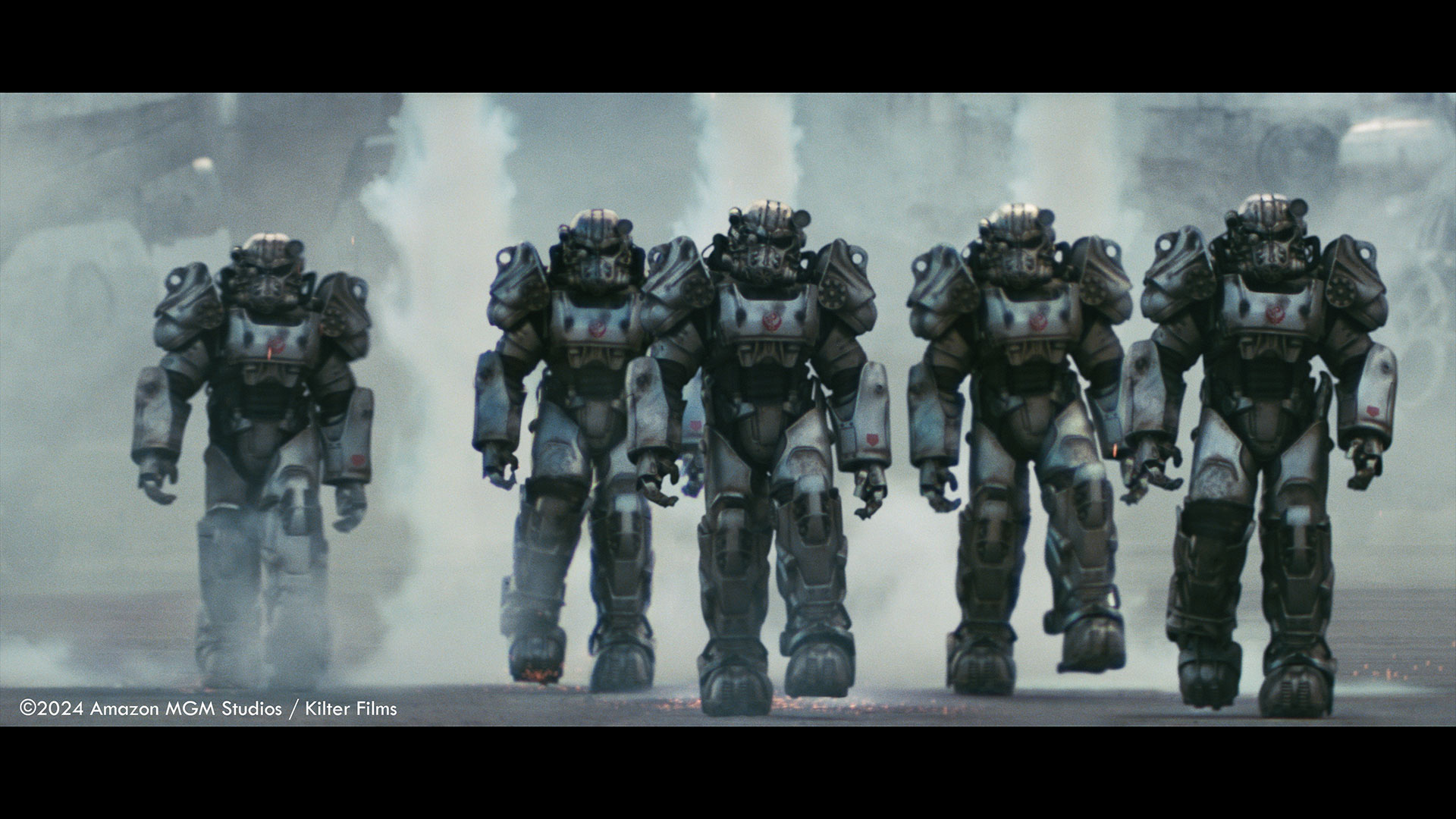
How was the collaboration with the showrunners and VFX Supervisor Jay Worth?
Jay Worth and Andrea Knoll, the client VFX producer, were a fantastic team to work with.
He and Jonathan Nolan had a clear vision for the Fallout TV series, and Jay gave us guidance on all of those different elements. But we still had the chance for creative exploration, and Jay was more than happy to discuss and refine those ideas with us, until they fitted perfectly into the Fallout universe.
I think that’s why I and the whole team enjoyed this show so much — there was this trustful and creative collaboration.
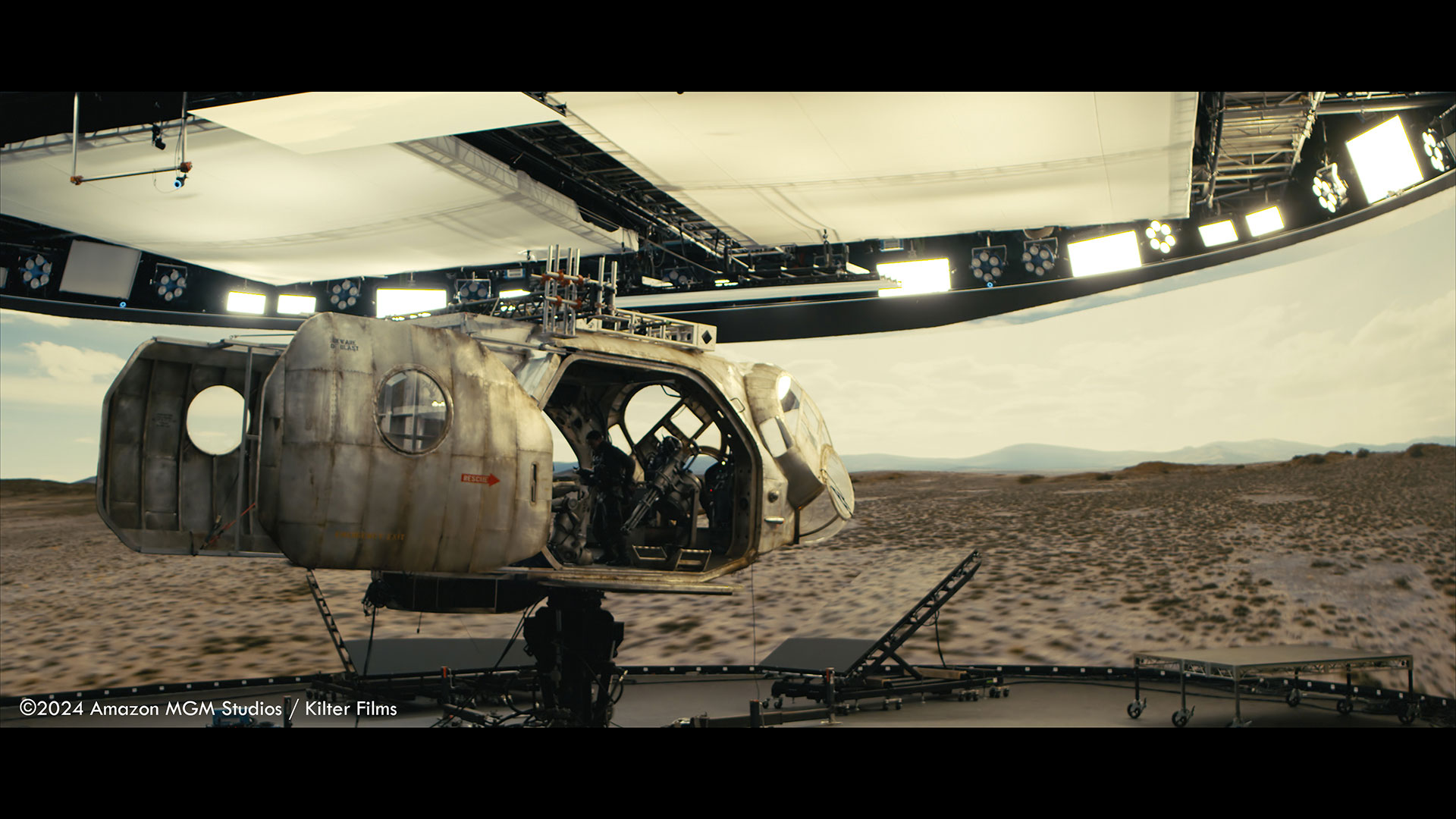
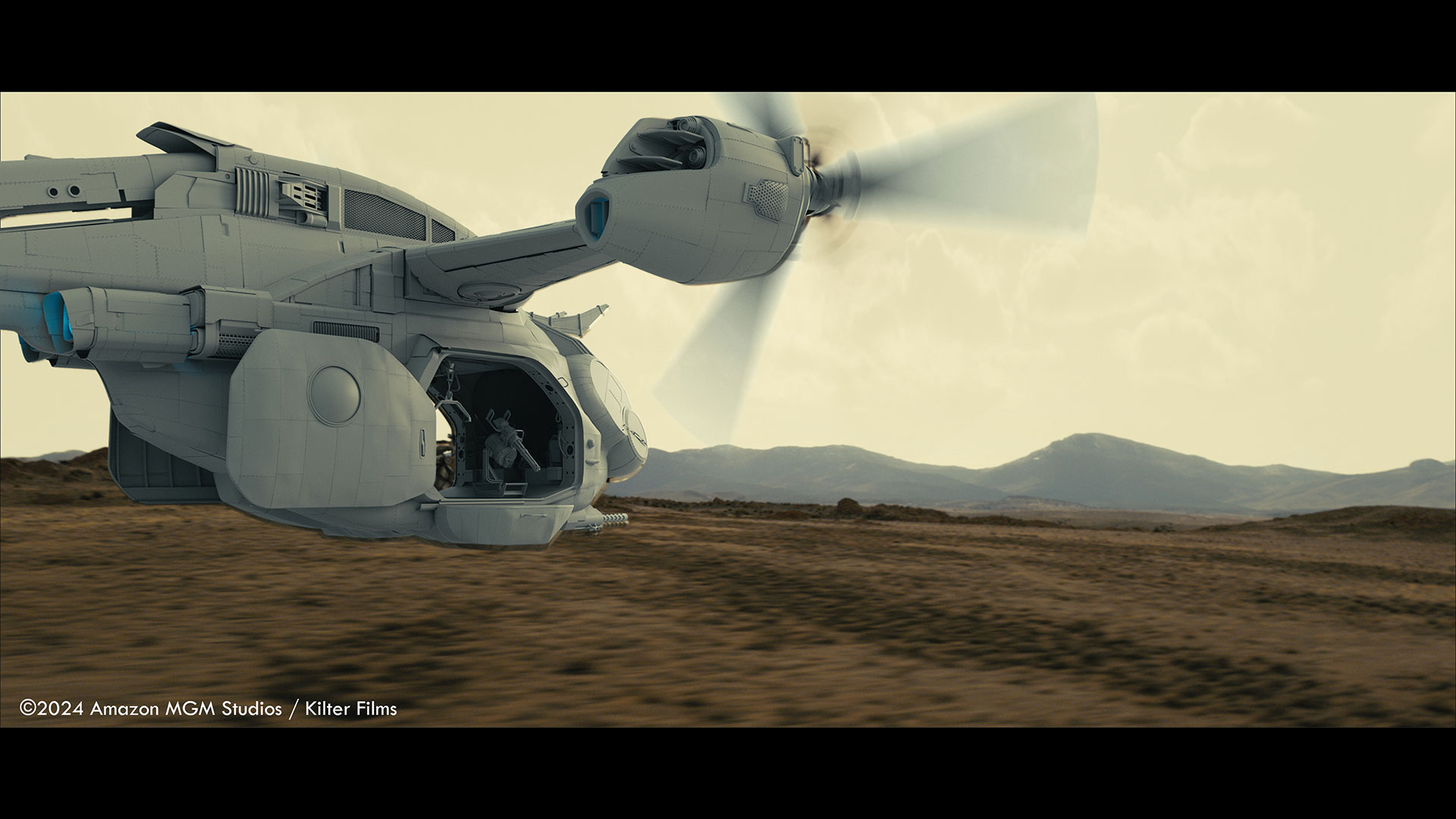
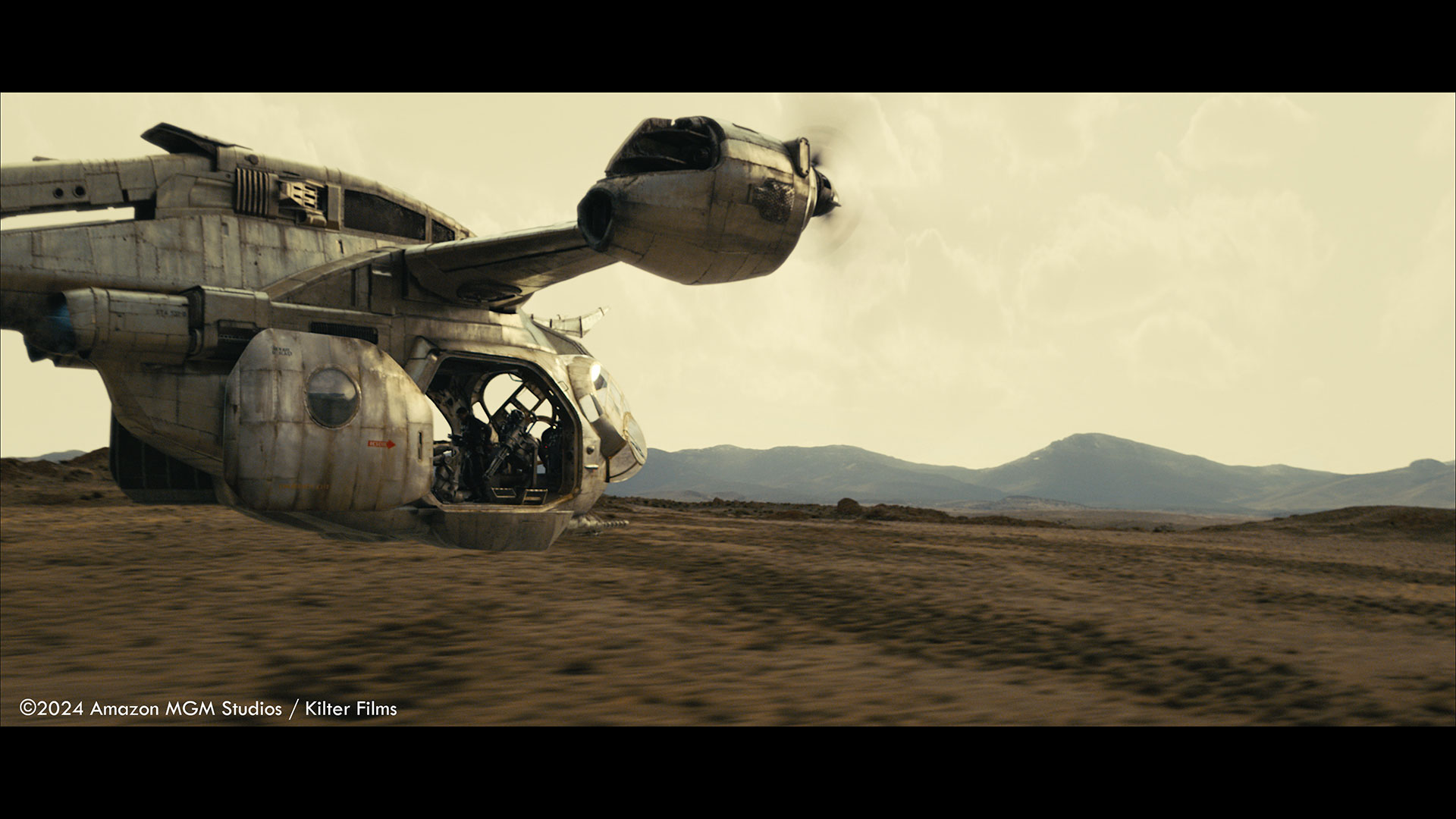
How did you organize the work between you and with your VFX Producer?
I’ve already worked with Annelie Dangel on a couple of shows, so I was really happy to do another one with her because we know we can trust each other and have a very similar idea of how to run a show. While she took care of scheduling, resources, and coordinating the day-to-day business with our production manager Scott Kunysz and her team, I was able to focus on the creative aspects with the department supervisors.
Of course, we’re always in touch and our bidding process is a very collaborative one to make sure we can deliver the best quality within the budget.
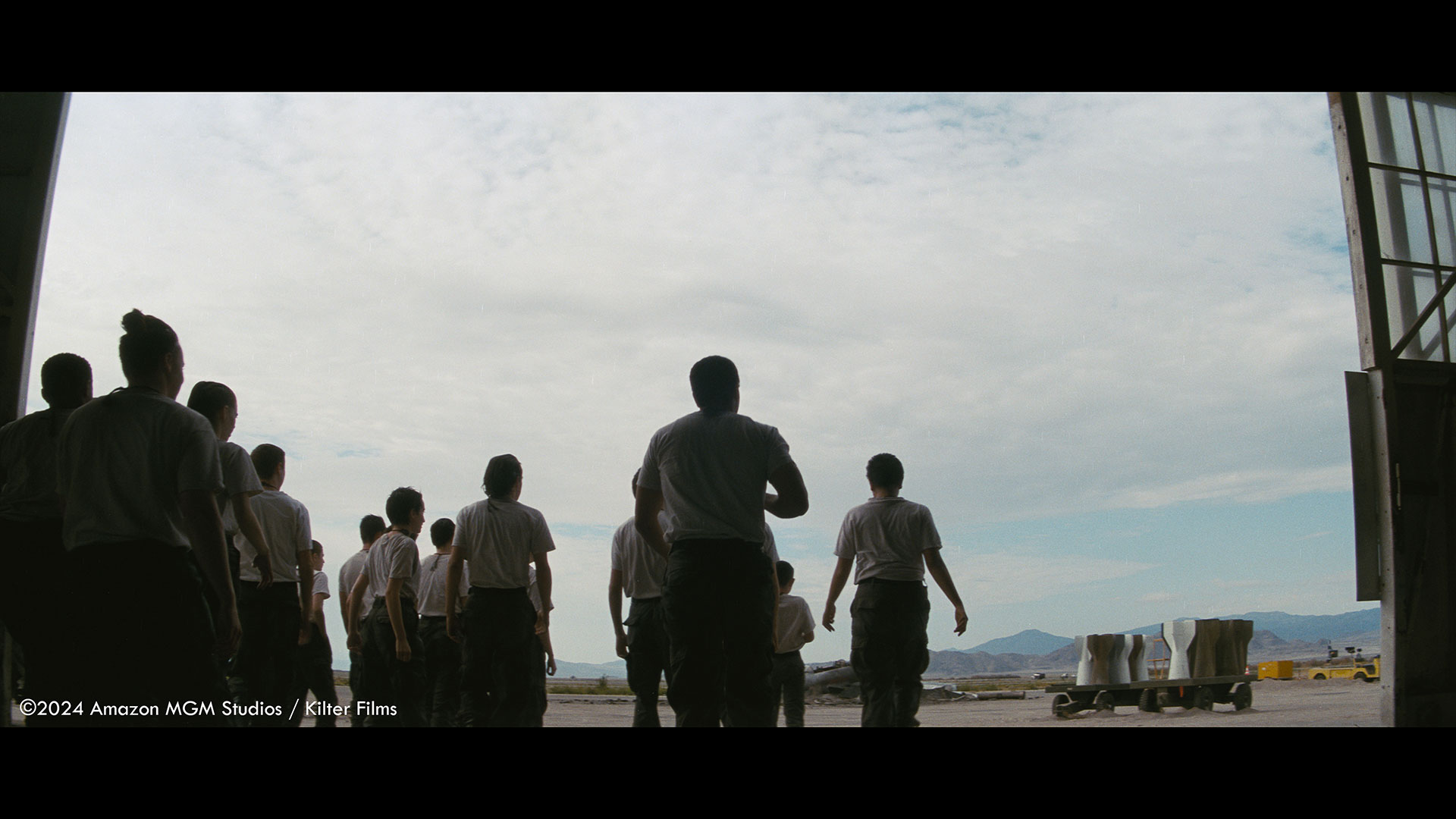
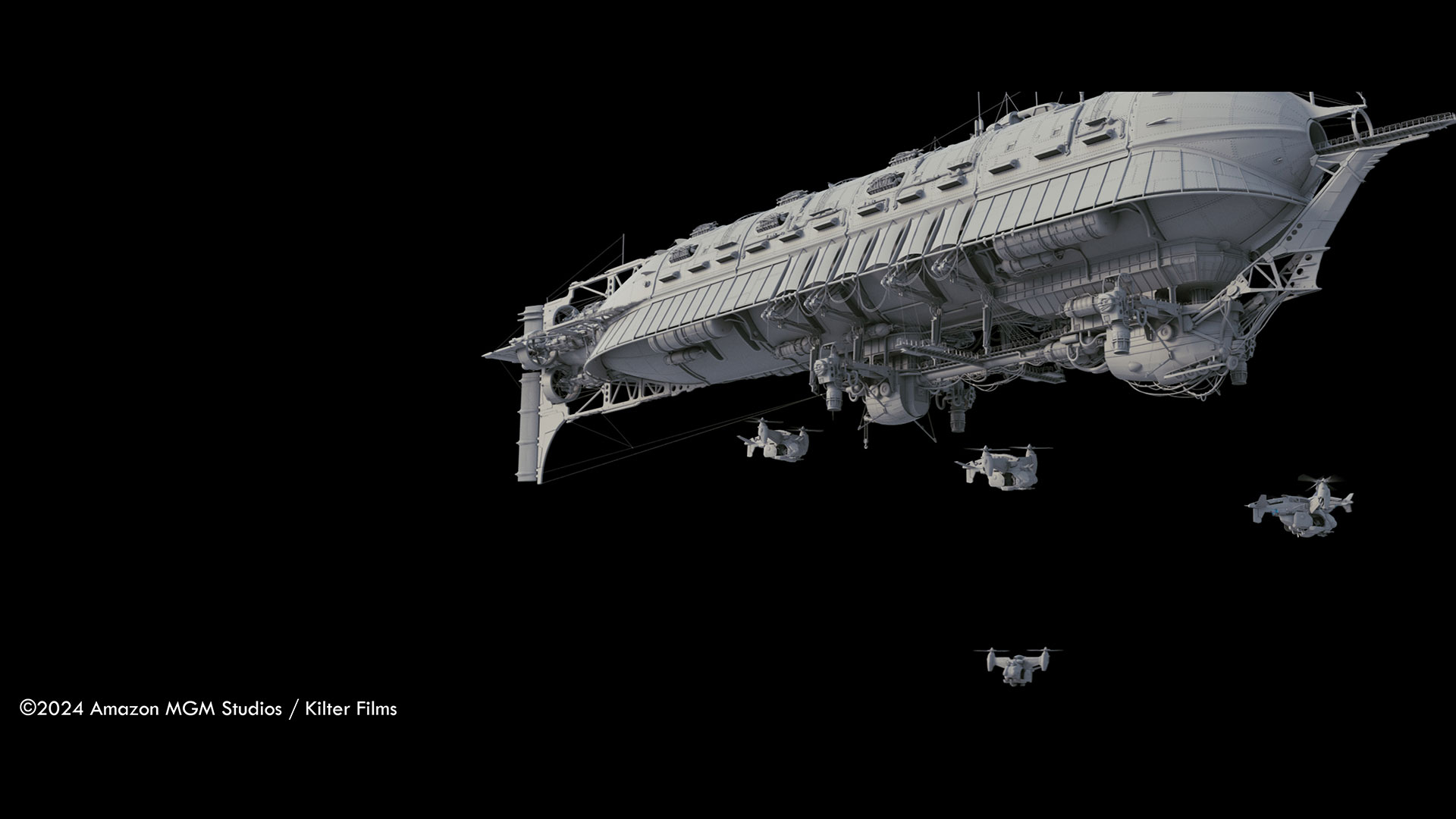
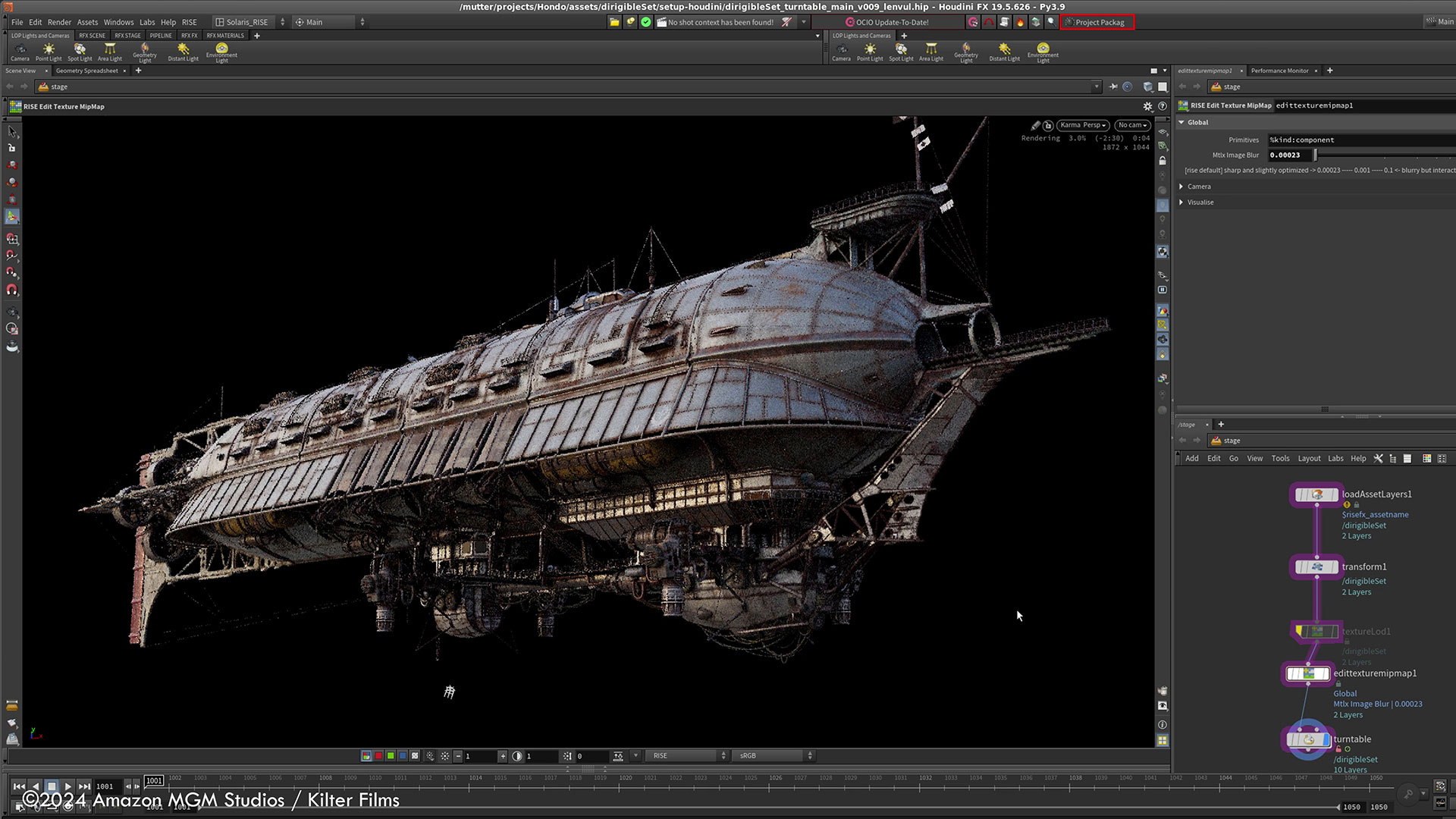
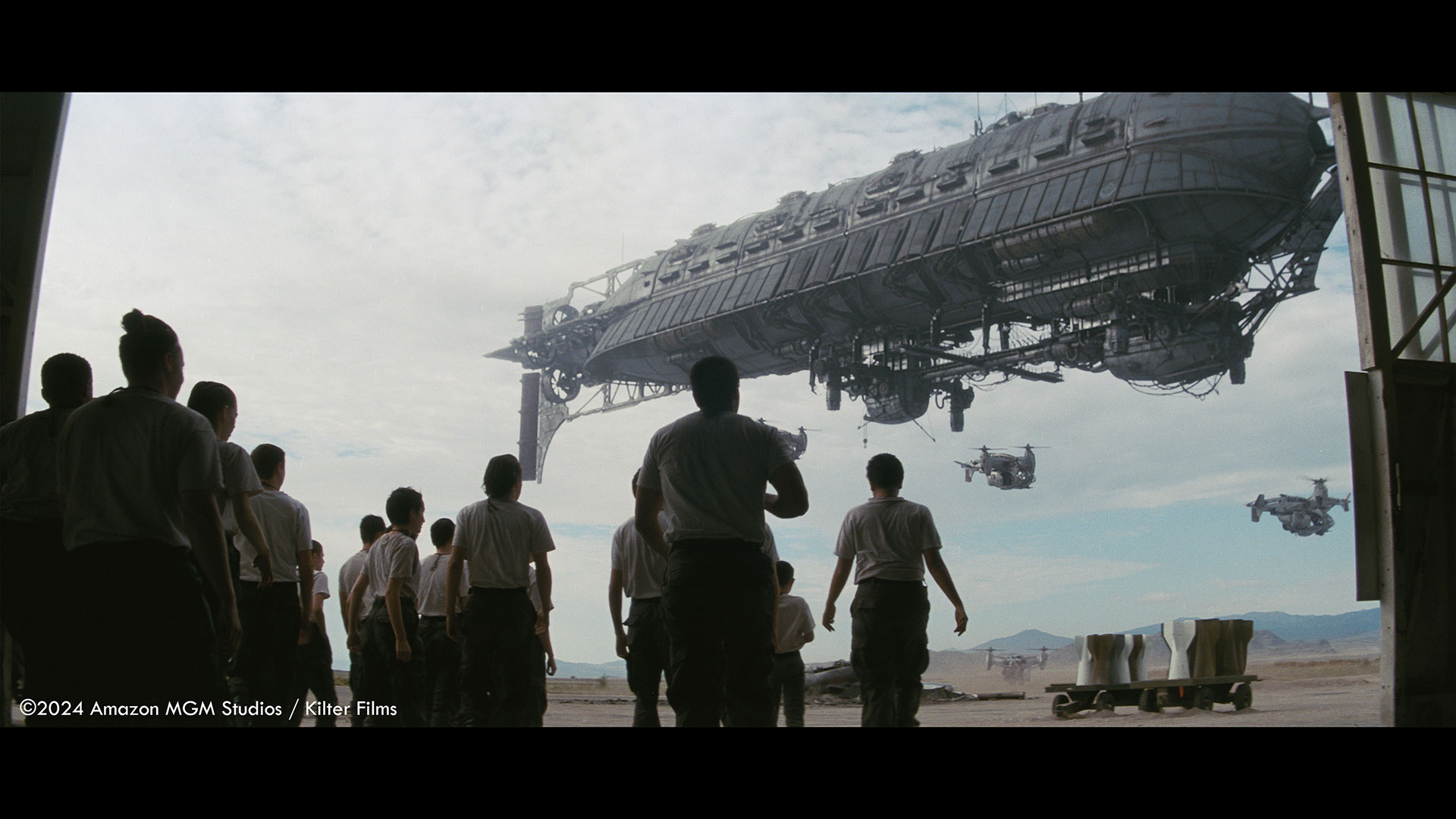
What are the sequences made by RISE?
We worked on about four hundred shots in total and delivered shots for more than 30 different sequences, spread across all 8 episodes.
So, there was a big variety of different tasks, which made this project very interesting but also challenging, as many of those we had to tackle in parallel.
Starting with the LA city bomb seq in the beginning, then hero assets like the Verti bird and the power armor, several wastelands and destroyed city environments, with some funny but also very violent encounters, all leading to the final battle in the last episode.
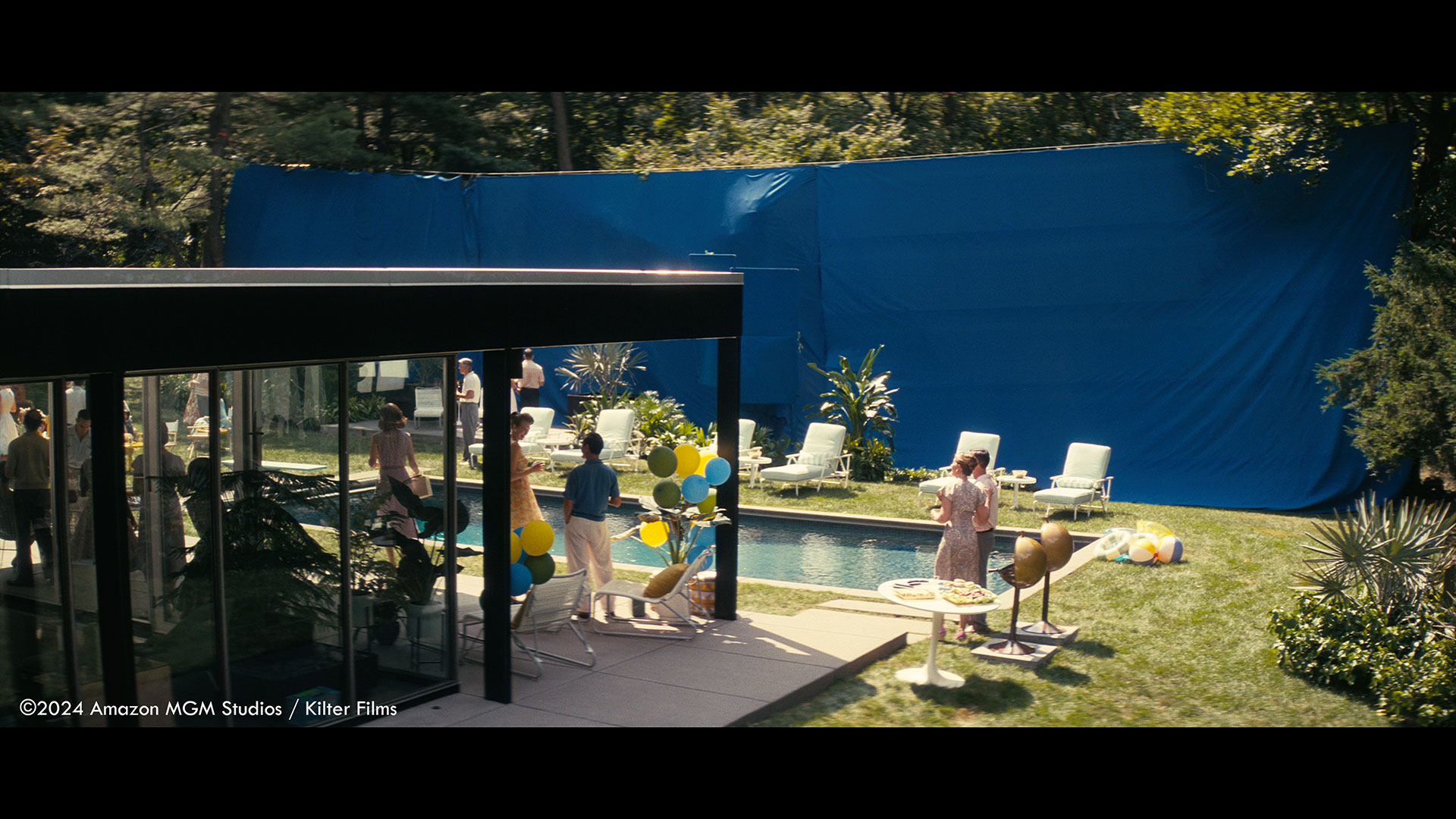
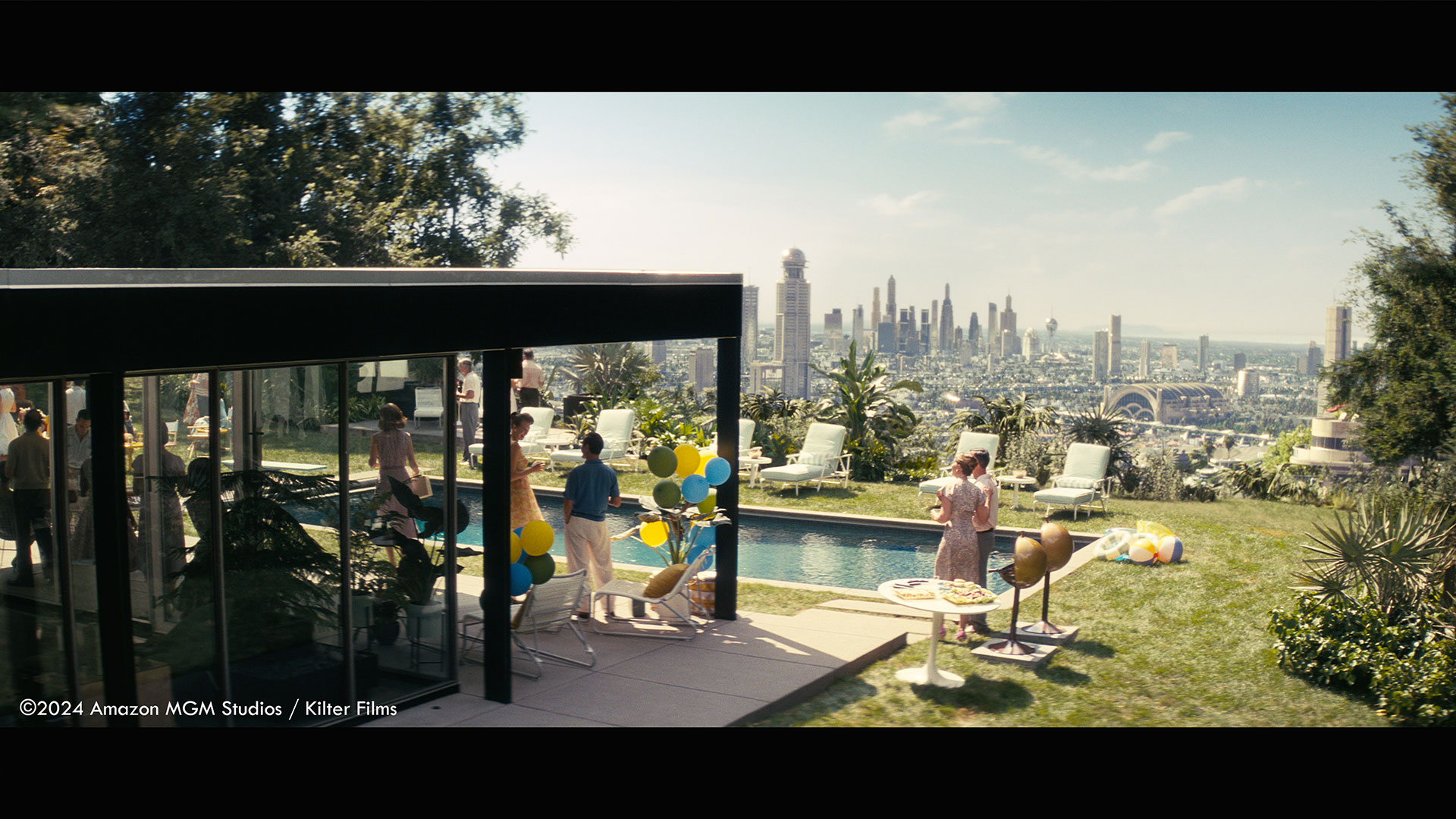
What are the main challenges in creating a convincing post-apocalyptic retro-futuristic Los Angeles environment?
The biggest challenge was to maintain the LA similarity while adding all the retro-futuristic features. We started off with a concept from the client that gave us a good idea for the overall look and feel.
In general, this sequence in the first episode was one of the most challenging for us because we had to create a retro-futuristic version of all of LA combined with very complex and long large scale effects simulations. We couldn’t rely on classic matte painting at all, as large parts of the city were dynamically destroyed and the huge pyroclastic cloud had to interact with everything.
As a base, we extracted the real topography of LA from online mapping tools. However, these buildings, or “blocks,” were not detailed enough, so we used procedural techniques in Houdini to distribute countless details: Windows, balconies, fire escapes, and roof structures. These elements were scattered based on certain rules that we first tested it on a single block of buildings and then refined. Color variations and coloring based on the original color of the building were important to create enough variation and avoid repetition even with these about thirty elements.
In addition, our asset team, led by our CG supervisor Jenny Leupold, modeled several hero landmarks and buildings in the classic way, which then contributed significantly to the retro-futuristic LA, such as City Hall or LAX Airport. Since LA also has many parks, we have tens of thousands of Speedtree trees as instances scattered throughout the city.
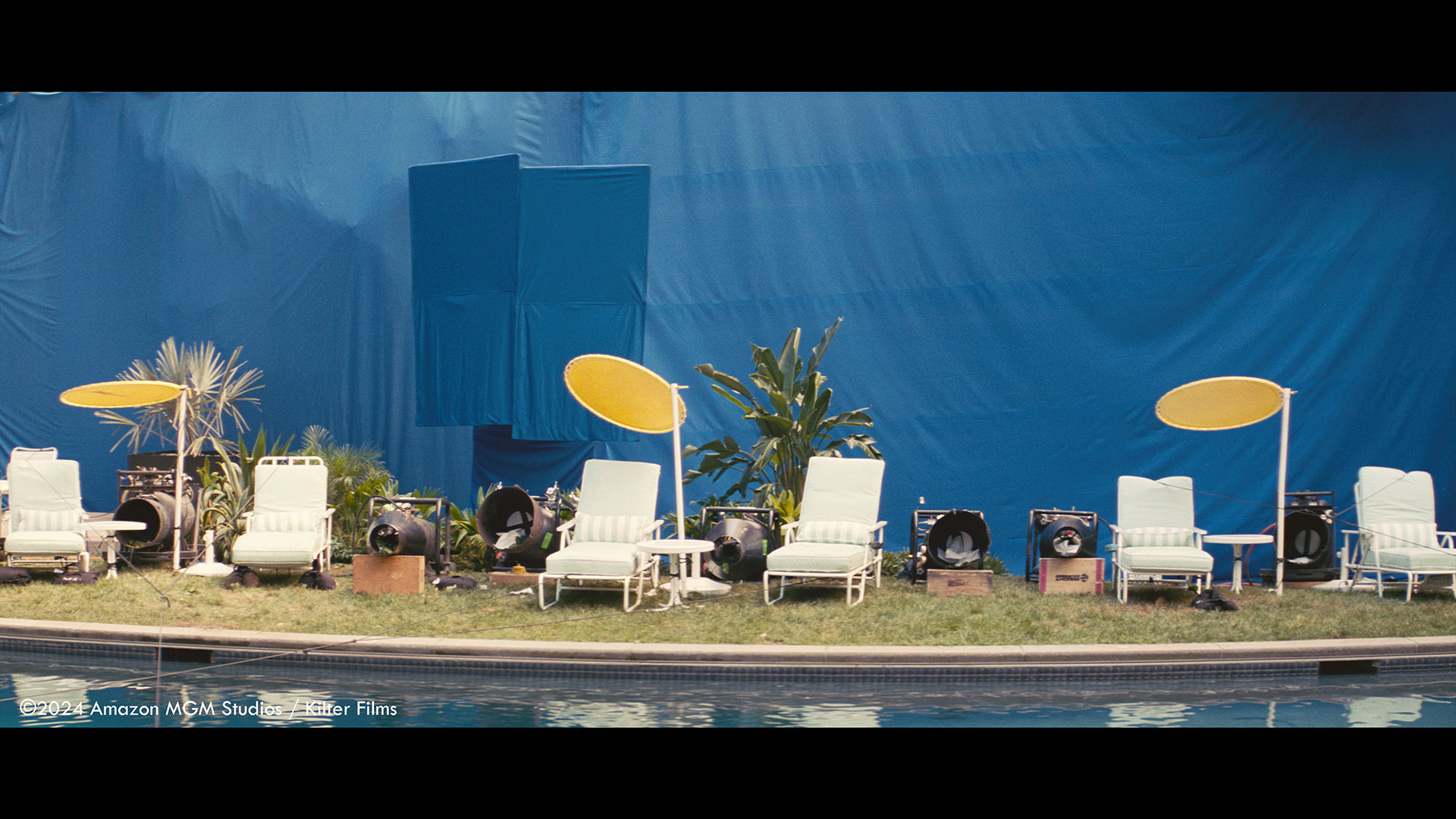
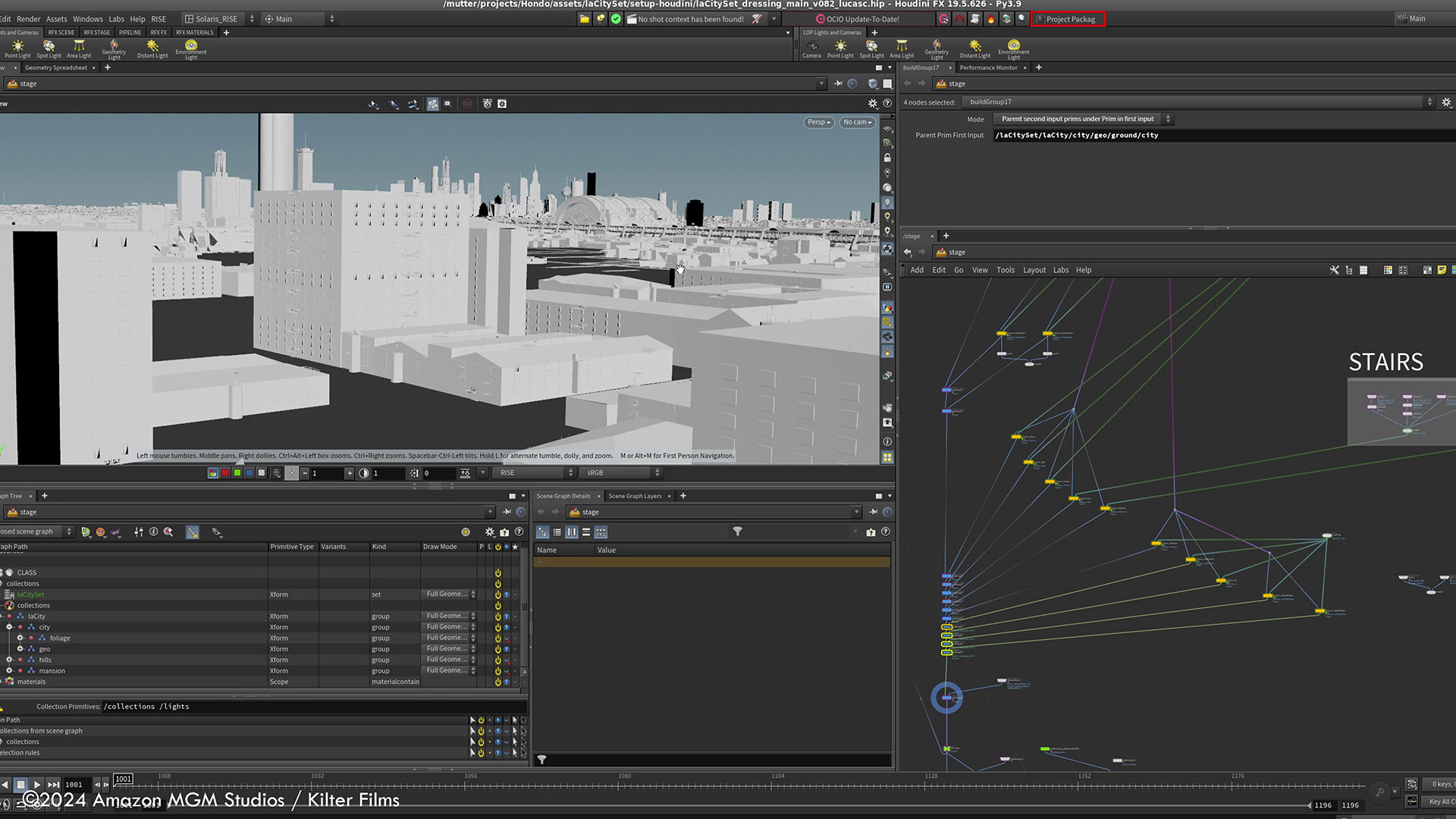
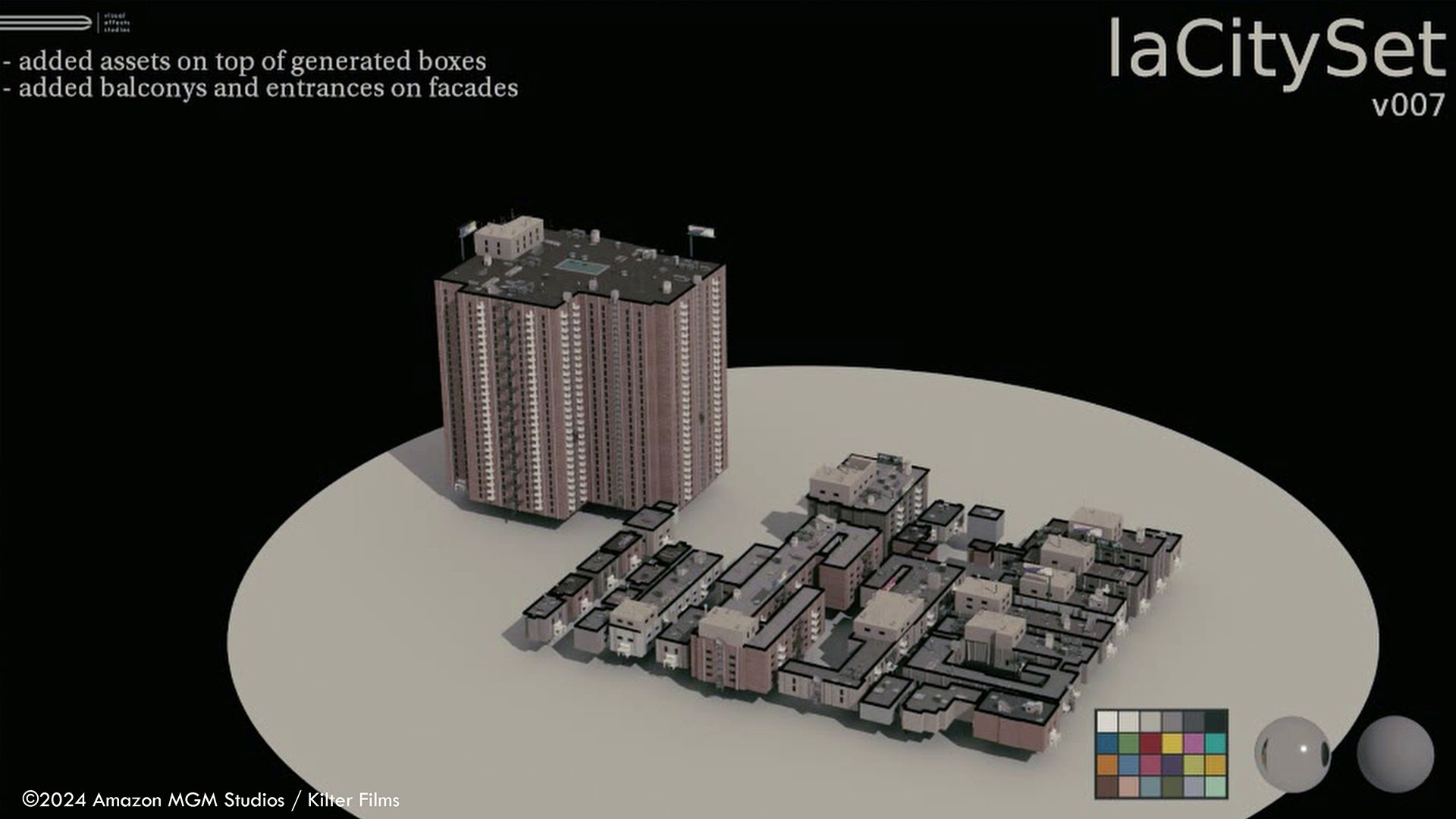
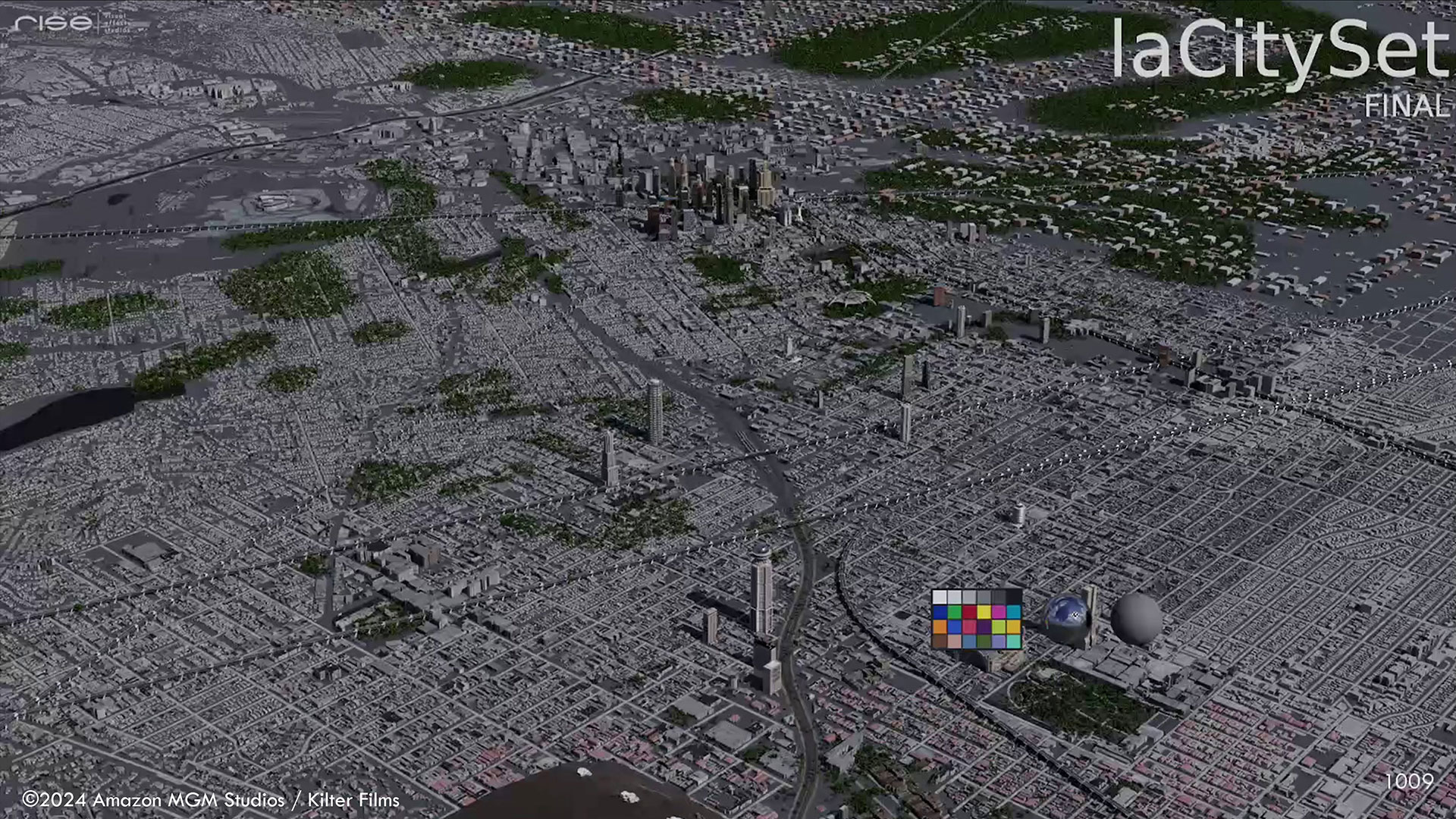
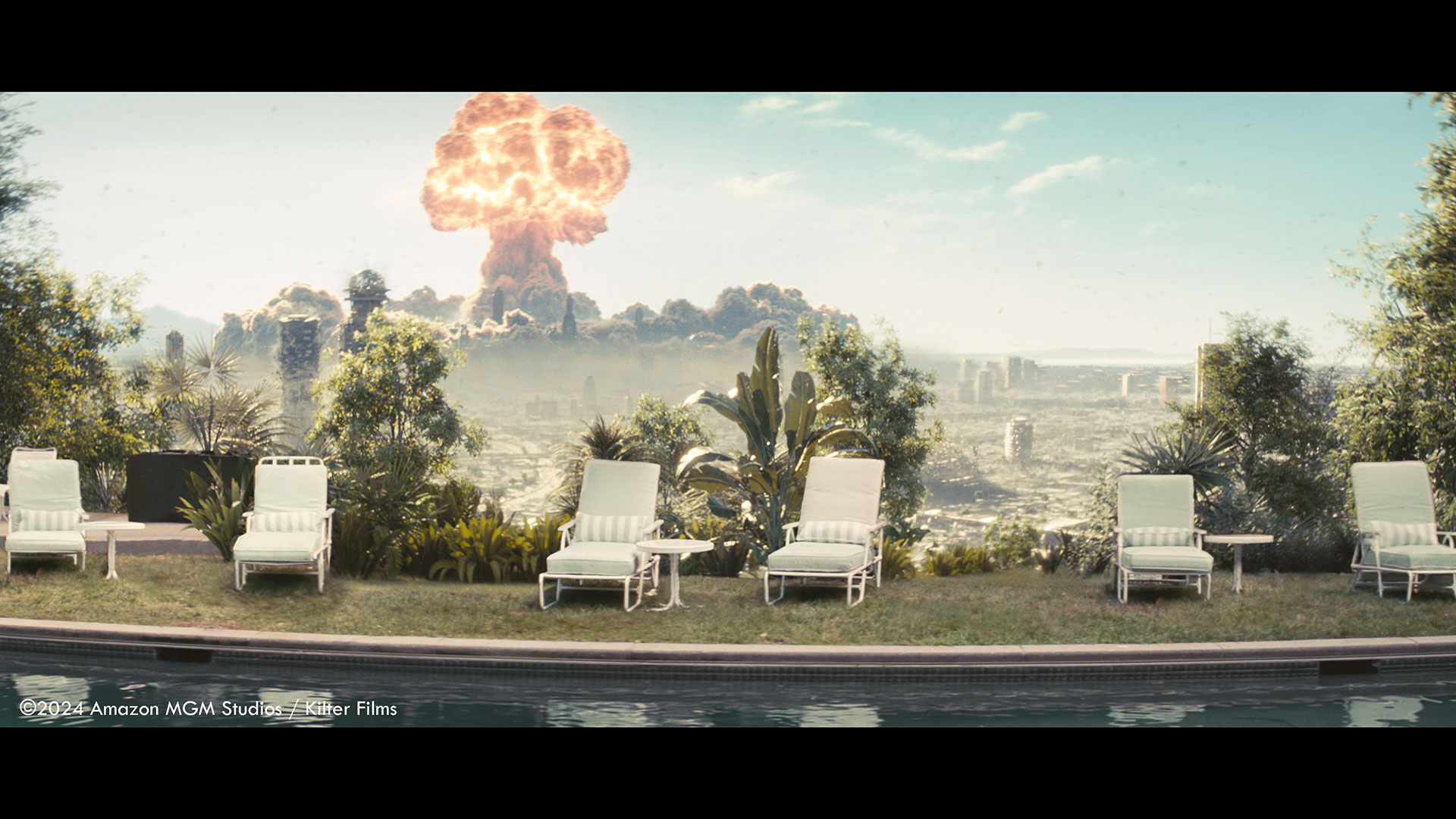
Can you discuss any particular scene or element that was especially challenging to create and how you overcame those difficulties?
Even though the overall topology is very close to the real LA, the scaling of Downtown in particular was a big topic because it was very important to the client that it remain clearly visible despite the distance we had to maintain.
If we had just scaled up the existing buildings, it would have ruined the whole scale of the city, because those buildings would have had much bigger windows than the ones closer to the camera.
So we ended up recreating the iconic downtown skyline with new and taller retro-futuristic buildings. That way, everyone could immediately identify LA and still see the great distance due to the correctly scaled details. We also had to adjust the layout of the city or the orientation slightly depending on the shot, so that the important elements were always in the frame.
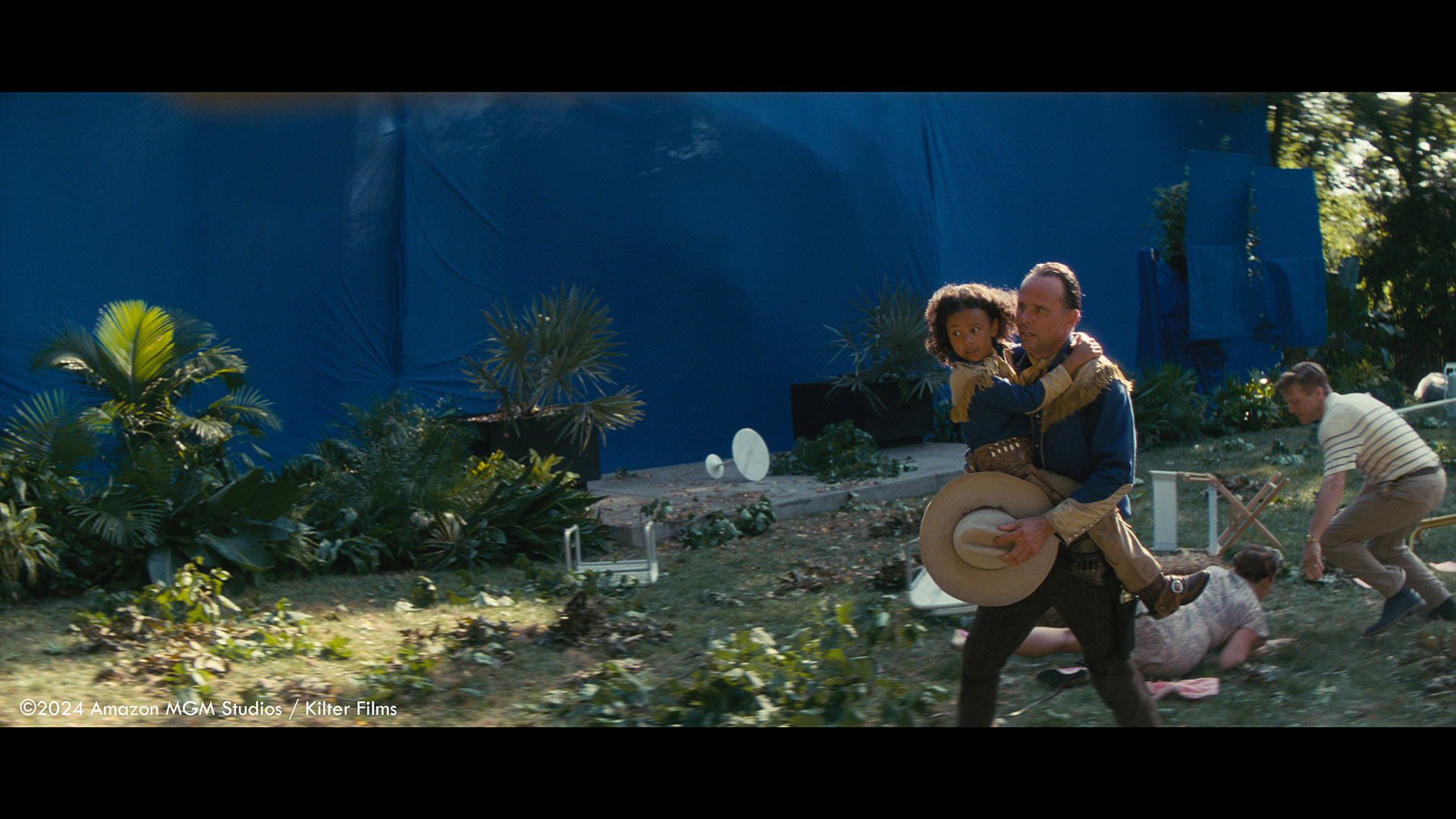
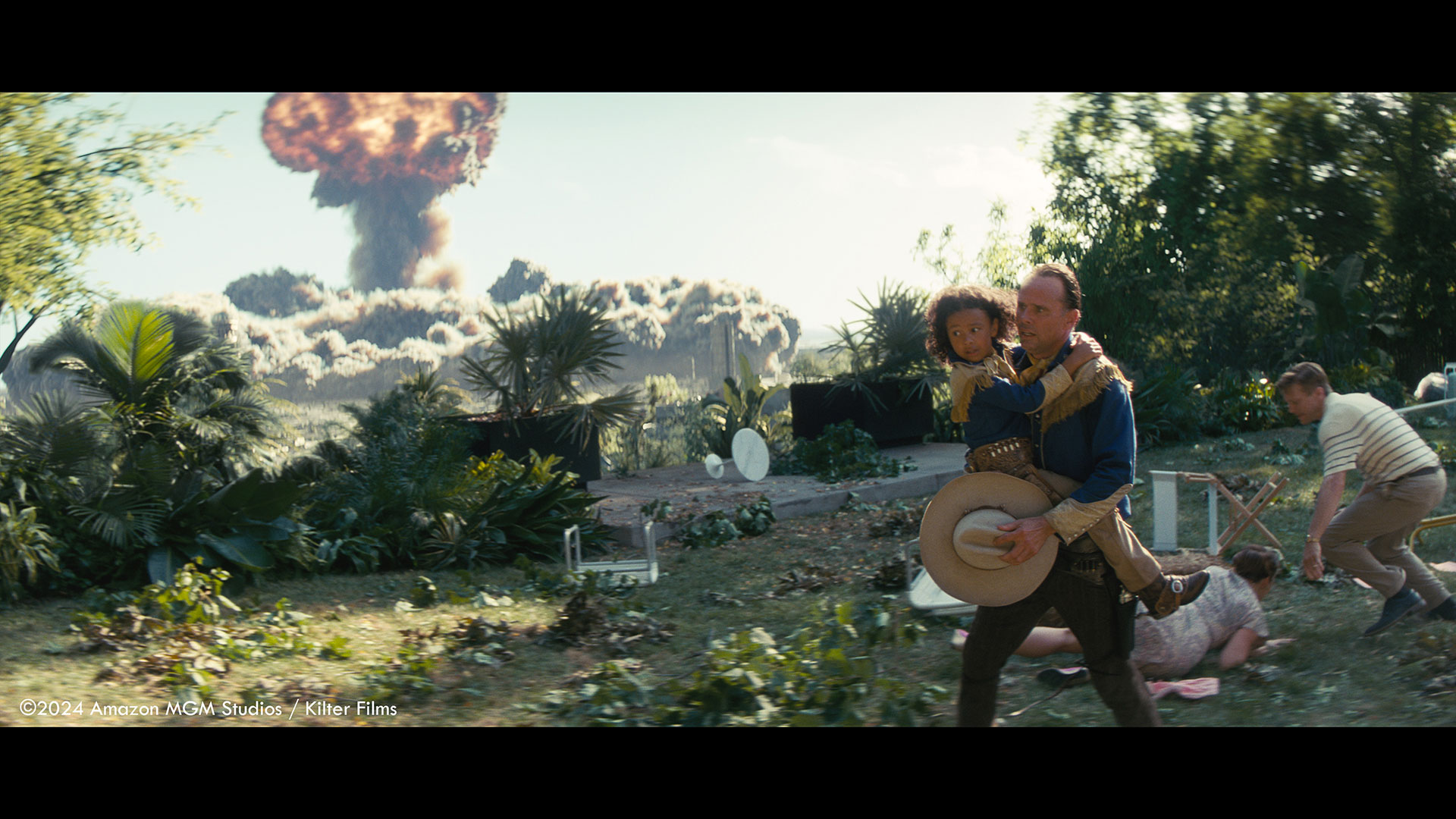
What were the main challenges faced by the visual effects team when creating the realistic and visually striking nuclear explosions for the Fallout series, and how did they overcome them?
There were several challenges with this sequence. The main explosion and blast wave extends over several shots, so we had to create extra-long simulations to maintain continuity from shot to shot.
Explosion shots in movies are often only two to three seconds long; in this case, all the shots together were about 30 seconds long. Our FX supervisor Kristian Kück and his team probably created some of the largest simulations ever done at RISE. Fallout used more space on our servers than the three projects I worked on before combined.
Thanks to our USD pipeline, we were able to make all the timing and placement adjustments for each shot in the sequence by moving one large cache in the Principle FX scene. The timing and placement is then “pushed” from this Houdini scene so that the lighting artist is automatically working with the current version based on which shot they are looking at in their Principle-Lighting scene.
Another challenge was the sheer number of layers that needed to be simulated for each of the four explosions in the final shot. While the explosion itself consisted of multiple layers, there were also collapsing buildings, swirling dust, various shockwaves, shattering windows and vegetation in the city and also in the foreground. The vegetation was particularly interesting because we had to find an efficient solution for this incredible number of trees. A complex simulation for each tree was out of the question.
Our FX-TD Jonas Sorgenfrei came up with an cool approach using the Speed-Tree Skeleton to skin the trees. The actual simulation in Houdini only simulates curves, which is very efficient. Using KineFX, the curves can even be easily adjusted entirely without simulation. The last step is to transfer the motion from the curves back to the trees. There is no need for point deforming or similar computationally intensive methods because the trees are already skinned and we can use the joint deform node just like with an animated character.
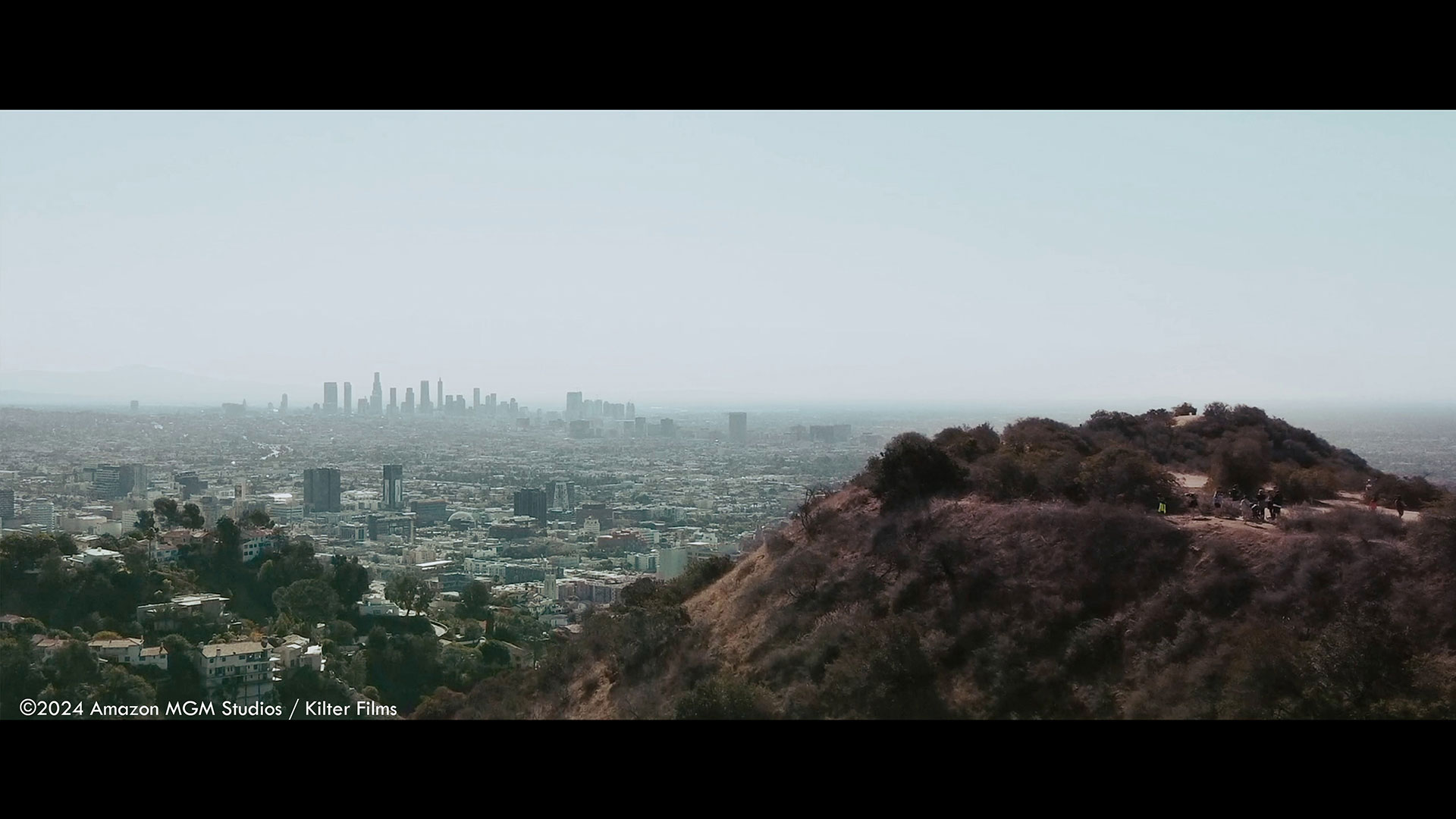
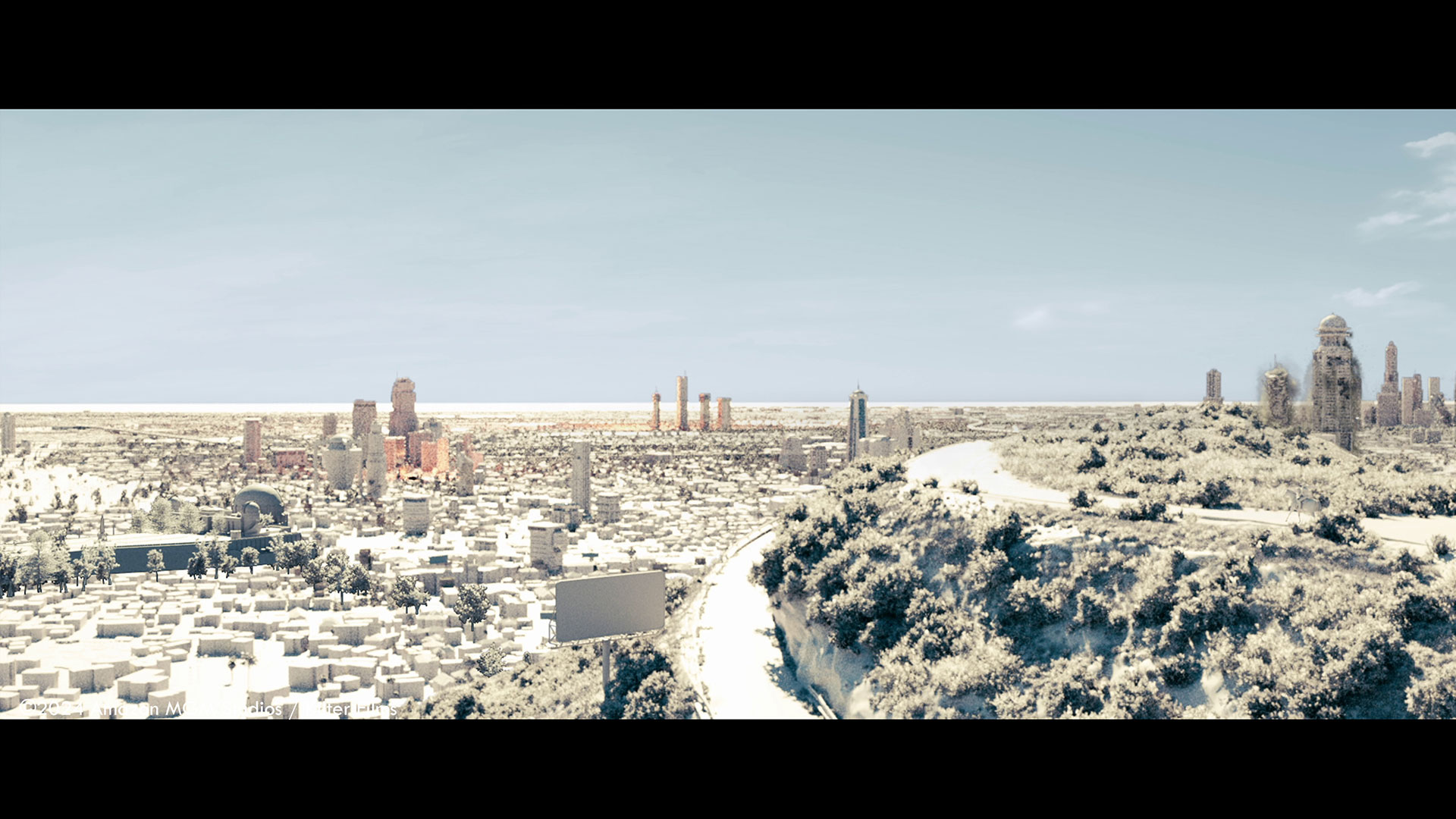
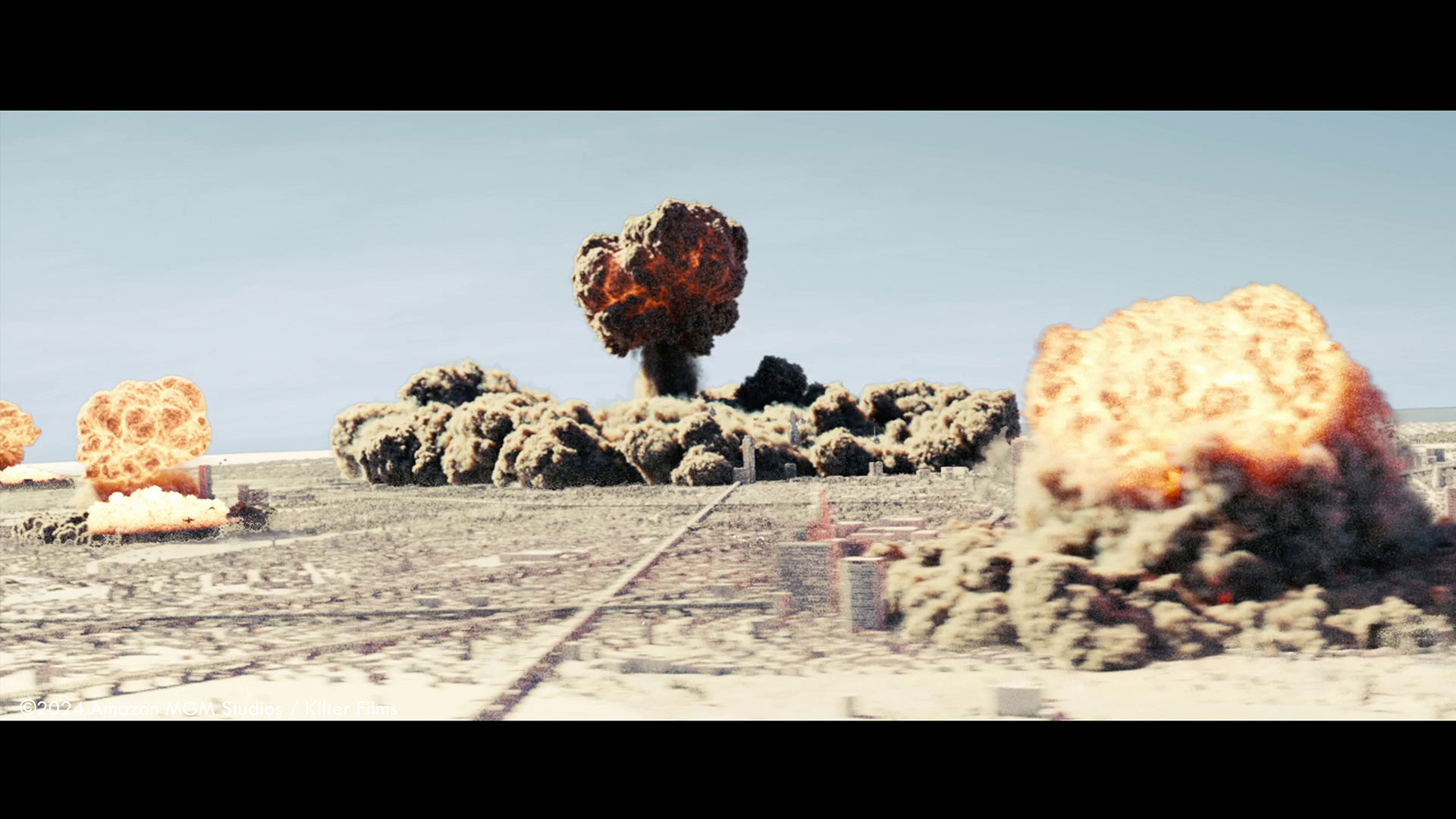
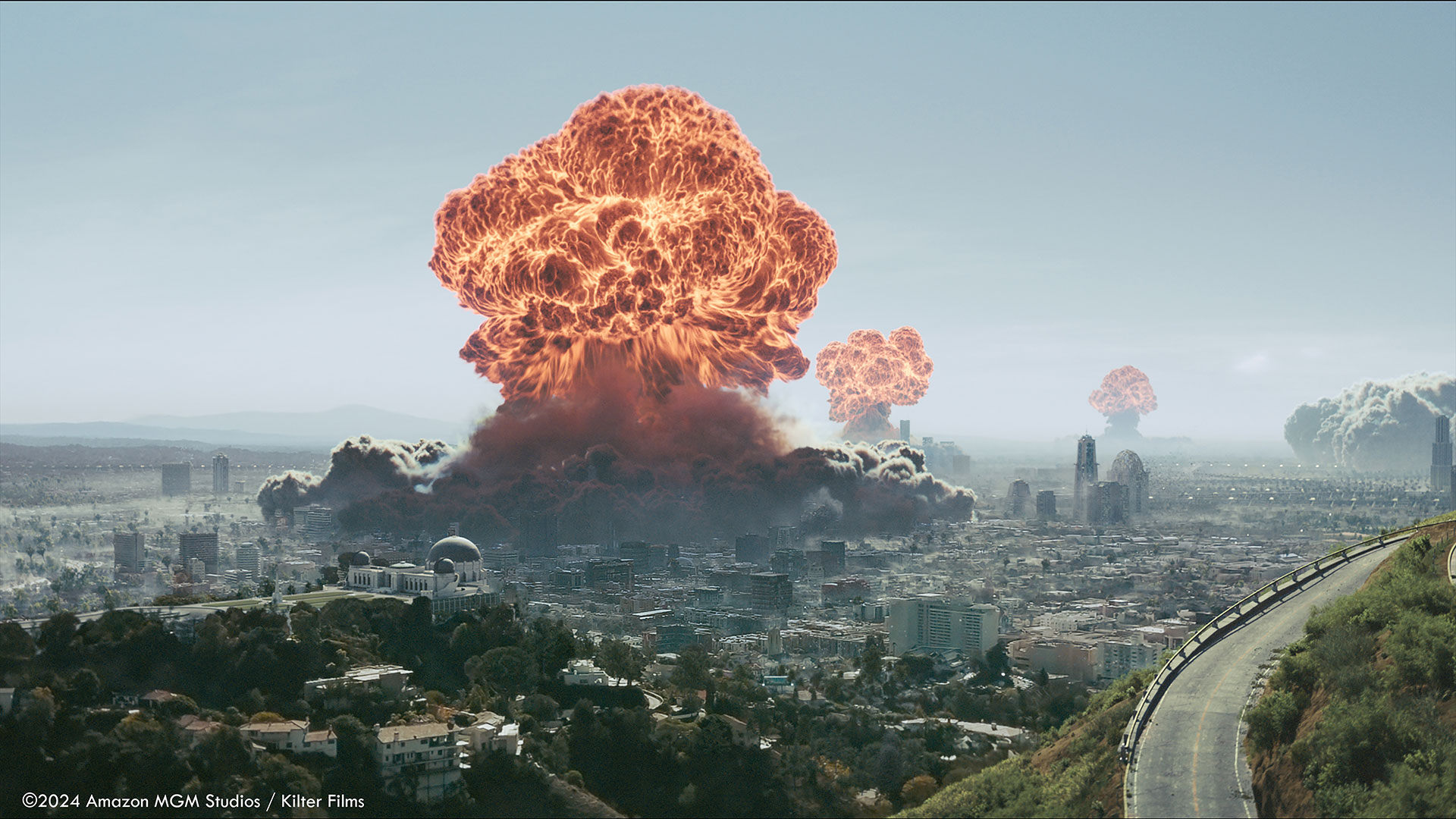
Can you discuss the collaborative process between the visual effects artists and the filmmakers in bringing the nuclear explosions to life?
Perhaps the biggest challenge was the look of the main explosion, so there was an intense process of exchanging ideas.
Of course, you can find some references to nuclear explosions online, including the typical mushroom look. However, Jonathan Nolan, the director, had a slightly different idea. In the first shots, when the little girl looks at the explosion, it should be unclear whether it is a nuclear explosion or just a big puff of smoke from a fire.
But if you look at those references, you can see the typical mushroom cloud almost immediately after the initial flash of the explosion is gone. So we had to find a way to make it visually believable that the mushroom cloud was coming out of the smoke cloud. This was a real deal for our FX team, especially since we didn’t want the two layers to be inside each another.
In the end, the key was to balance the different velocities in the simulations so that the mushroom cloud rising later would slowly influence the other smoke without the scale suffering from too fast advection.
How do you ensure continuity and consistency in the visual effects across different scenes and sequences?
Especially with the bomb sequence that was quite a challenge. To define the timing and placement we started with a low resolution base simulation that we used in simple layout scenes, basically like a post viz. At this stage, it was still very quick to adjust based on feedback from Jay and editorial. These layouts were also used in early test screenings.
Once we had a timing established and approved, we could start adding more and more detail and layers, although the main simulation is still one very long effects cache, to ensure consistency.
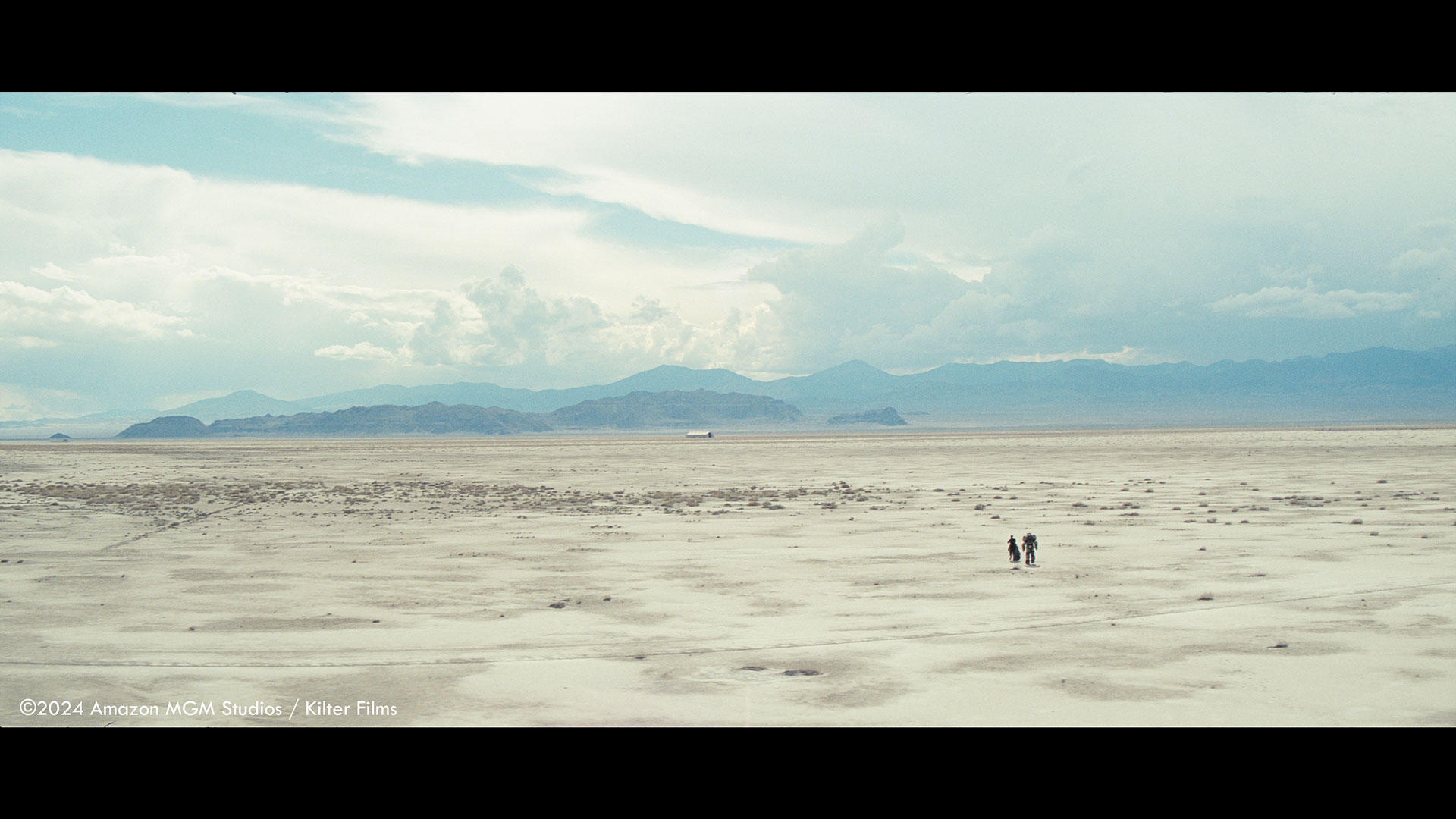
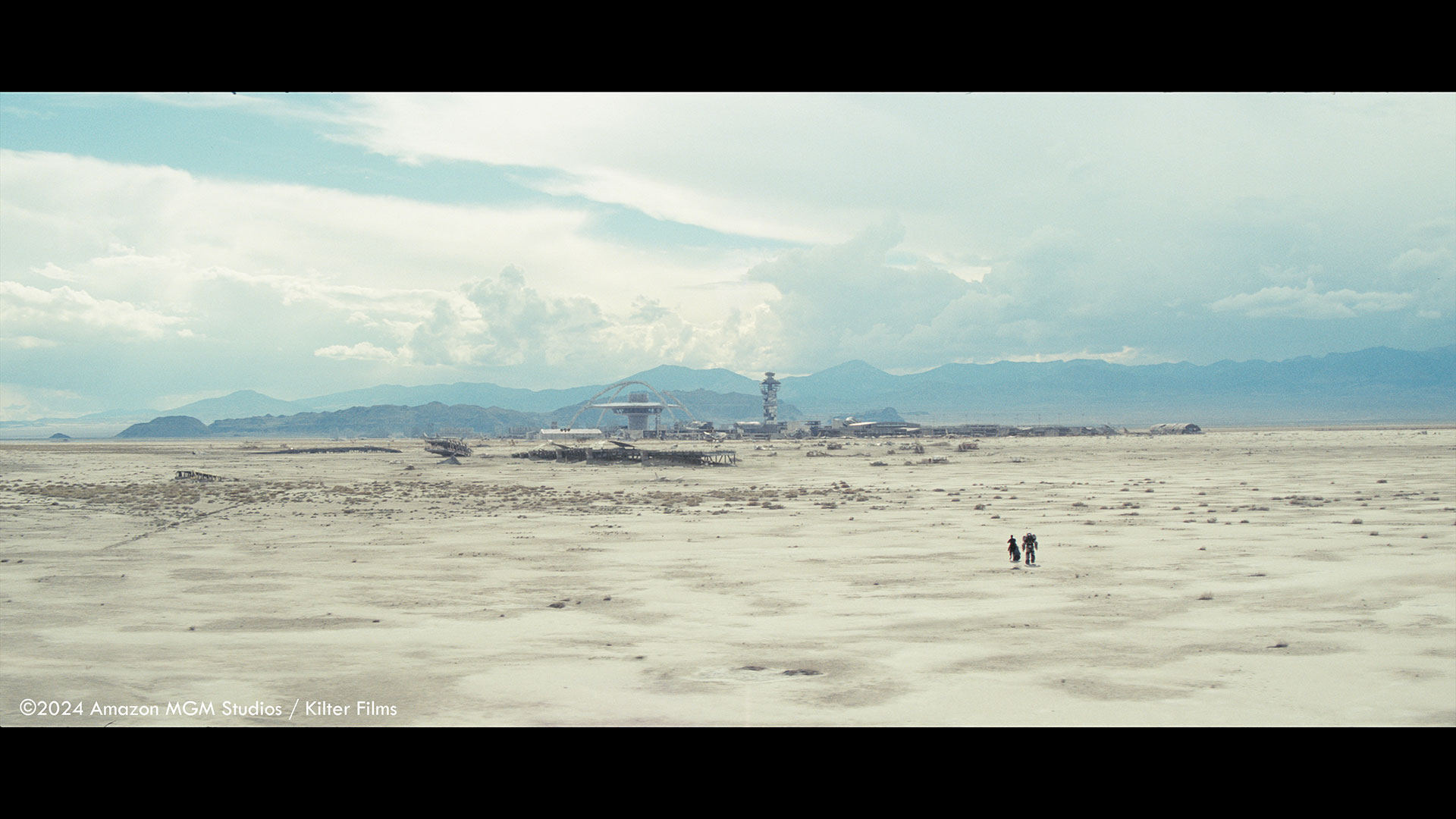
What were the main challenges in designing the Power Armor to make it both functional and true to the original game aesthetic?
Actually, a fully functional real power armor was built by Legacy Effects for the shoot, so this was the reference to match. Of course a 3D lidar scan and photographic reference was provided.
We got the basic model of the power armor from another vendor and then refined it with a number of details because in some of our shots we see the armor up close, like when Max crushes the bandit’s head with the hand of the power armor. So a few scratches had to be added here and there, especially in the texturing.
We also modeled and textured the entire interior of the armor based on the lidar scan, as we had shots in episode three where the armor was completely open.
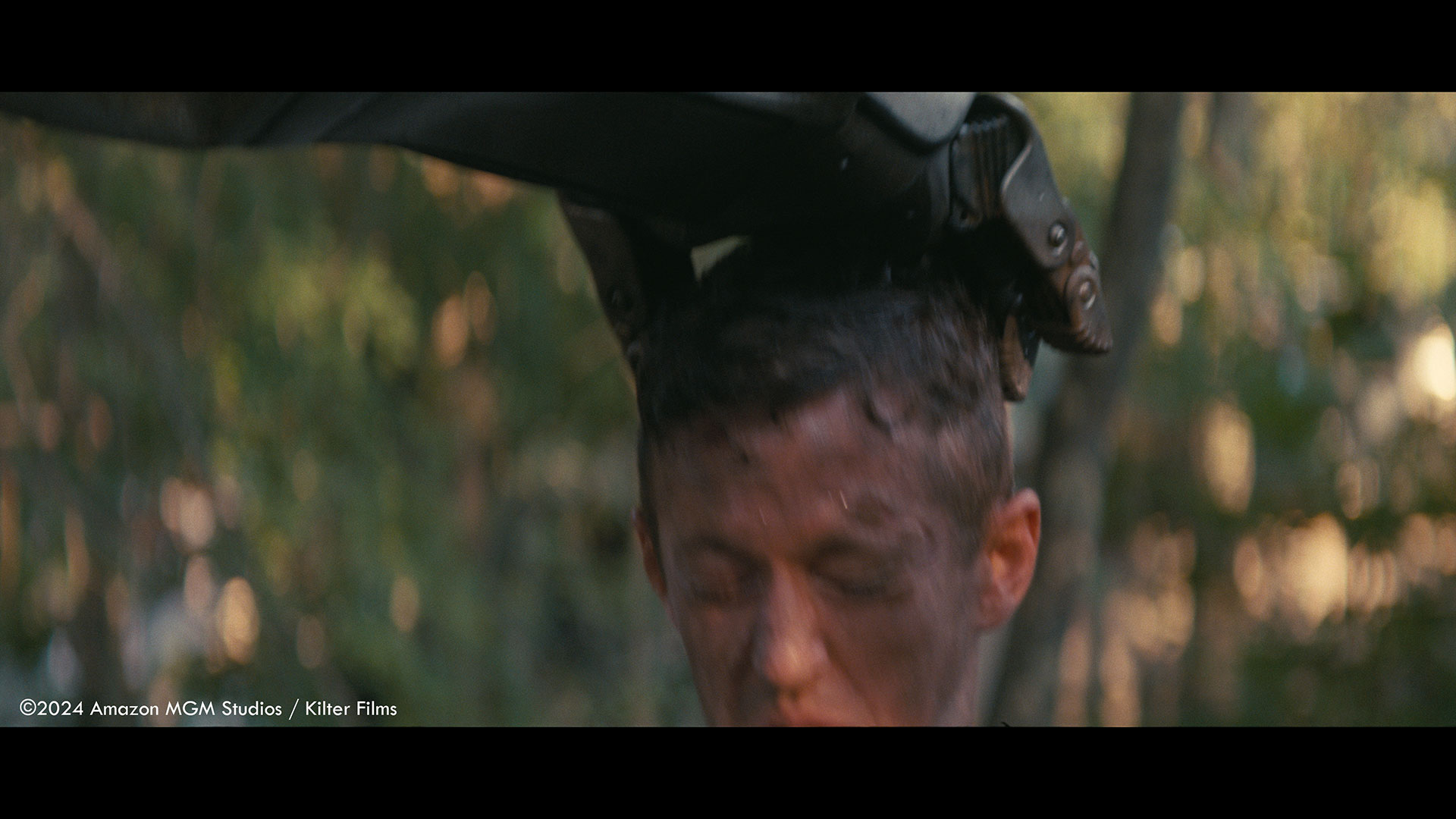
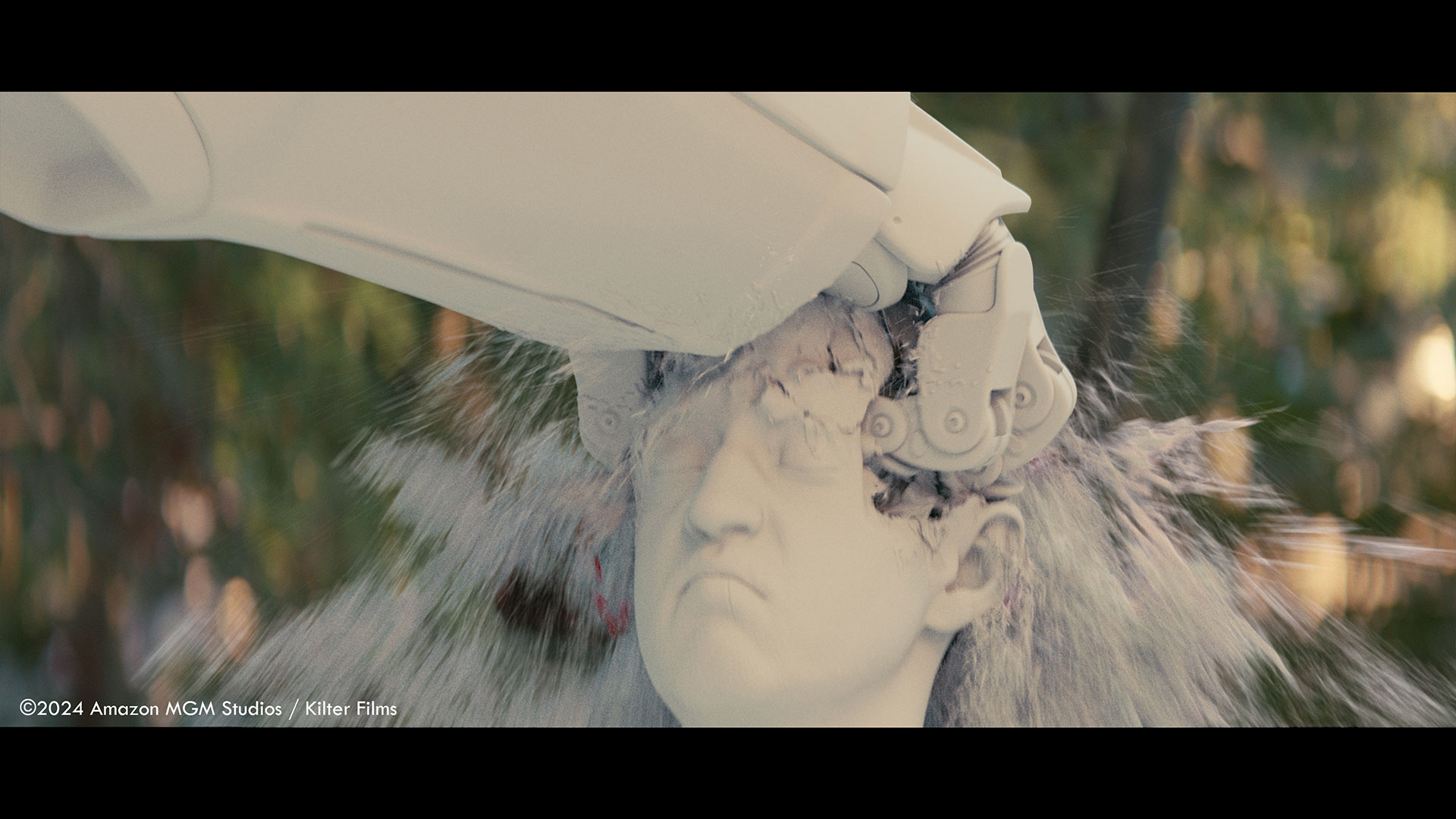
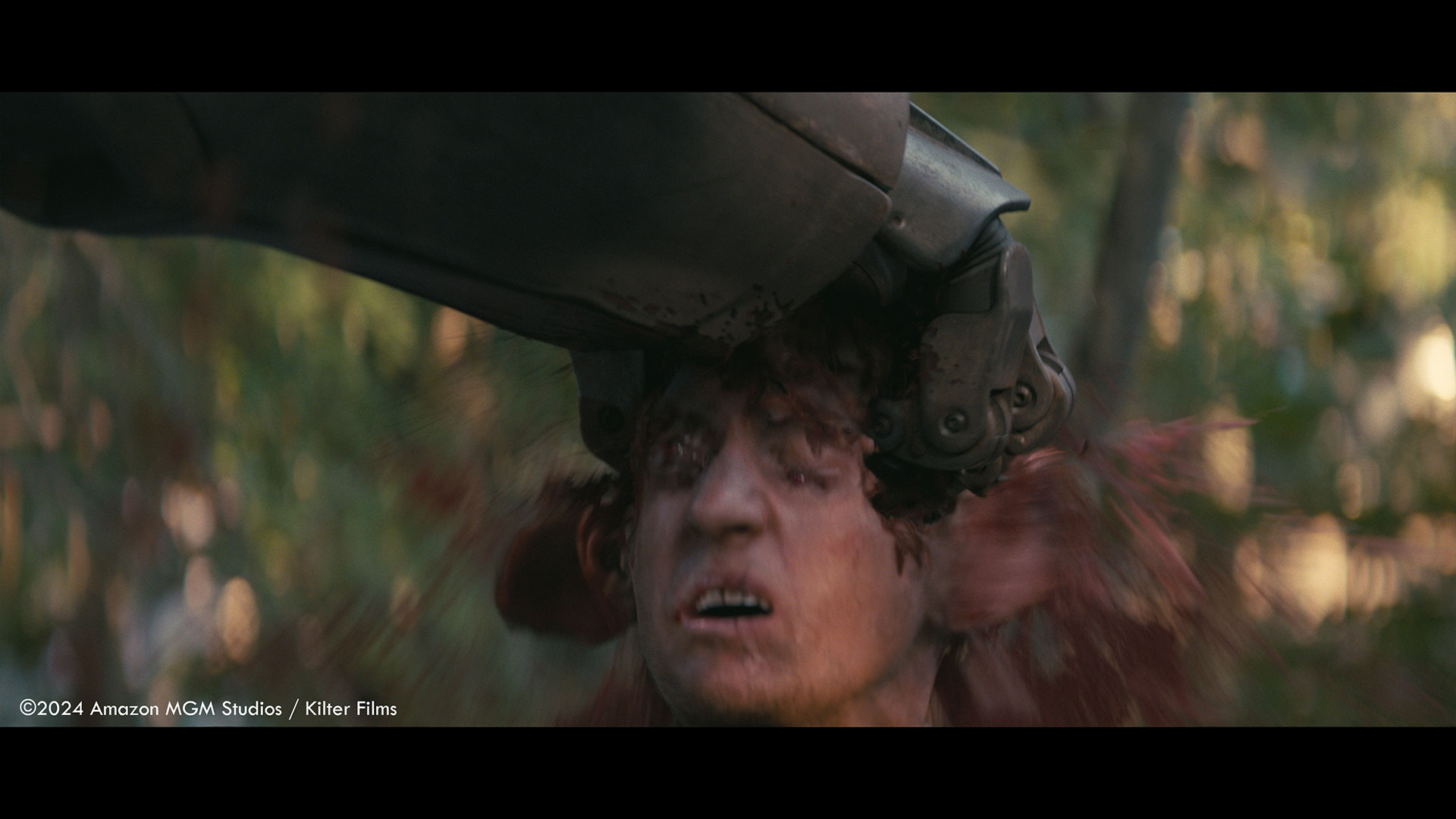
Can you describe the process of transforming a well-known city like Los Angeles into a post-apocalyptic landscape and which references did you use?
For the post-nuke version of LA, we kept some of the iconic landmarks and most of the other buildings were transformed into destroyed versions and the wasteland itself, basically the negative space was much more important. That was also a key aspect of the references we looked at of cities that were in ruins or ghost towns that had been destroyed a long time ago.
Since we are still in a real location of the city of LA, we first extracted elevation data from map services and projected that information into a height field that created the wasteland.
Next we procedurally scattered destroyed buildings in Houdini, mixed with LA Hero buildings that we had also built for the undestroyed version of LA. As they were destroyed in complex simulations in the first episode, we were able to use the final state of those simulations for the post-bombing shots.
In addition to the buildings, countless other details such as piles of rubble, destroyed cars, and remnants of vegetation were scattered throughout. This, combined with another heightfield layer that simulated the sand that piled up around these details, resulted in a realistic landscape.
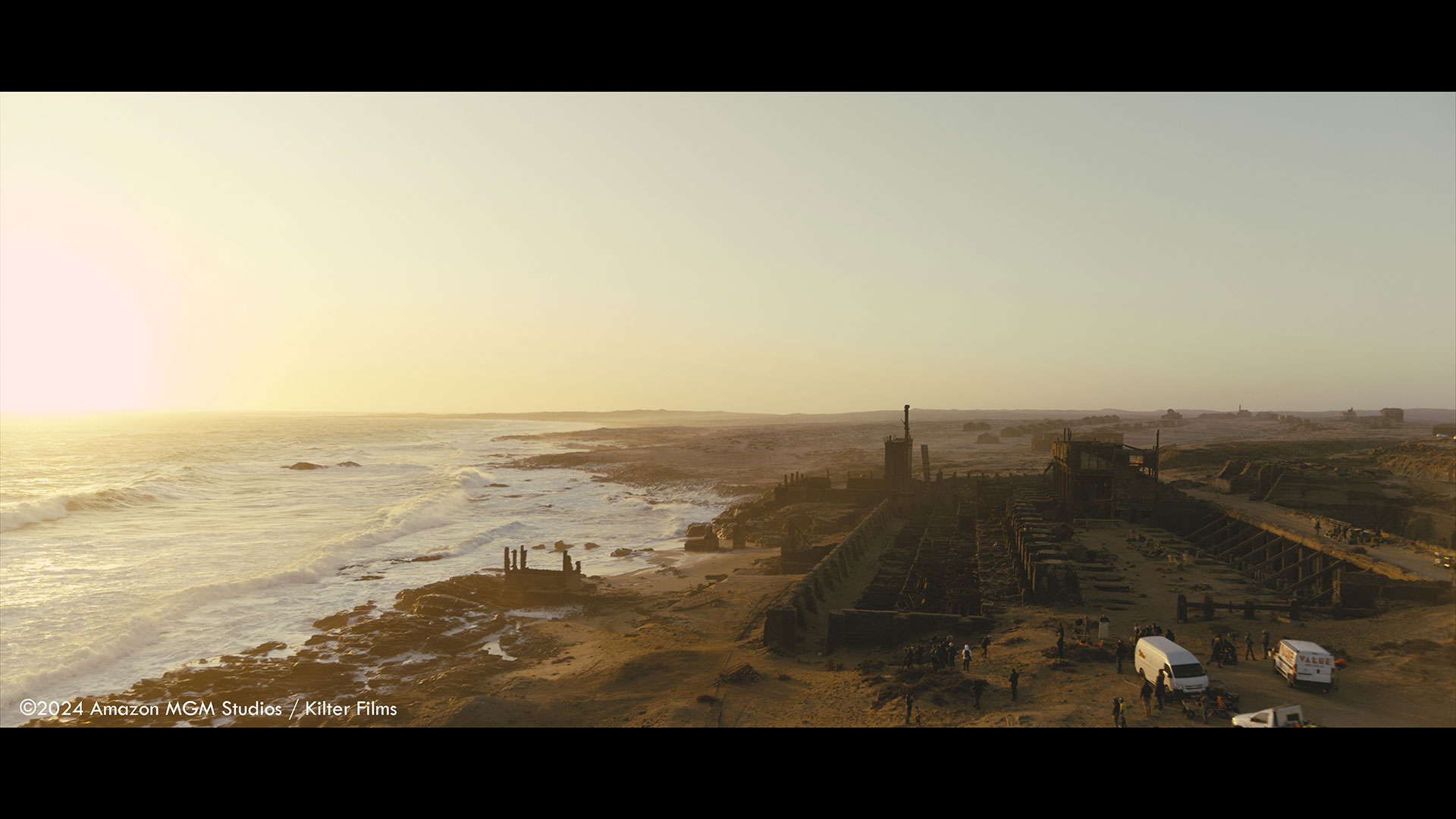
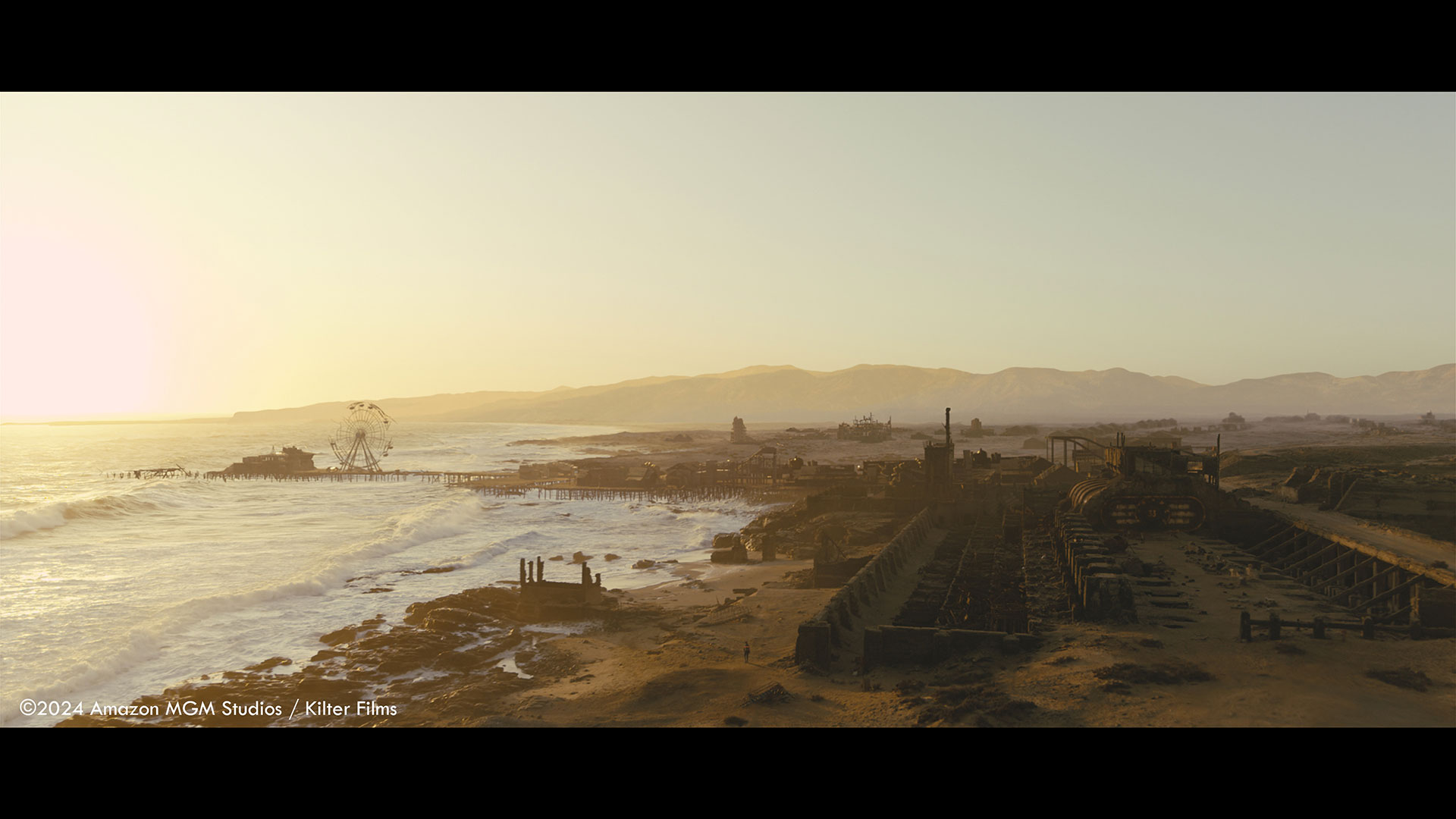
How do you balance artistic creativity with realism when designing a devastated cityscape?
I think both are part of the normal process that any asset, shot or environment goes through.
Artistic creativity comes first, and once everyone is happy with those key features, it’s the next step to build around them and add more and more detail until it looks photoreal.
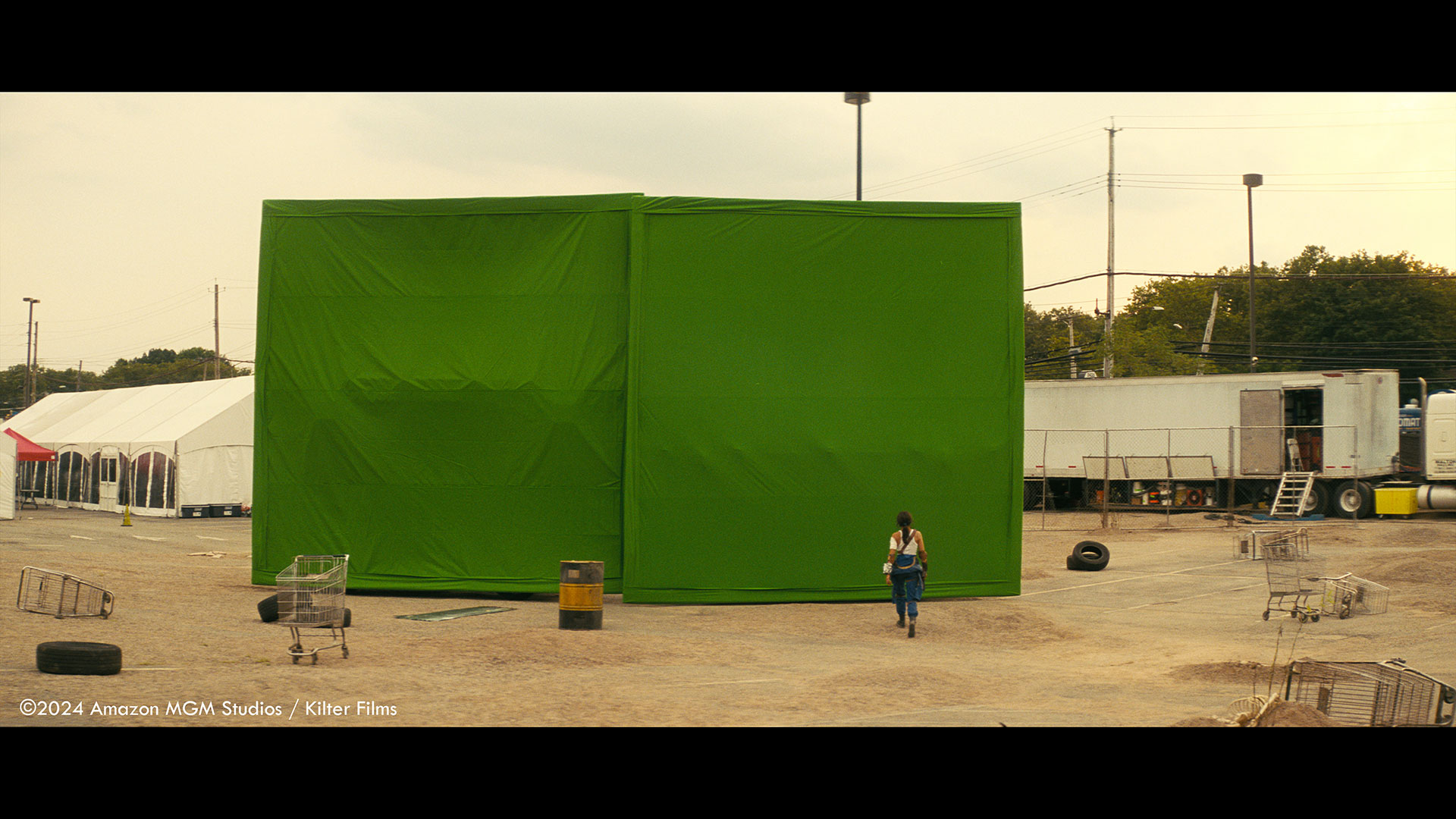
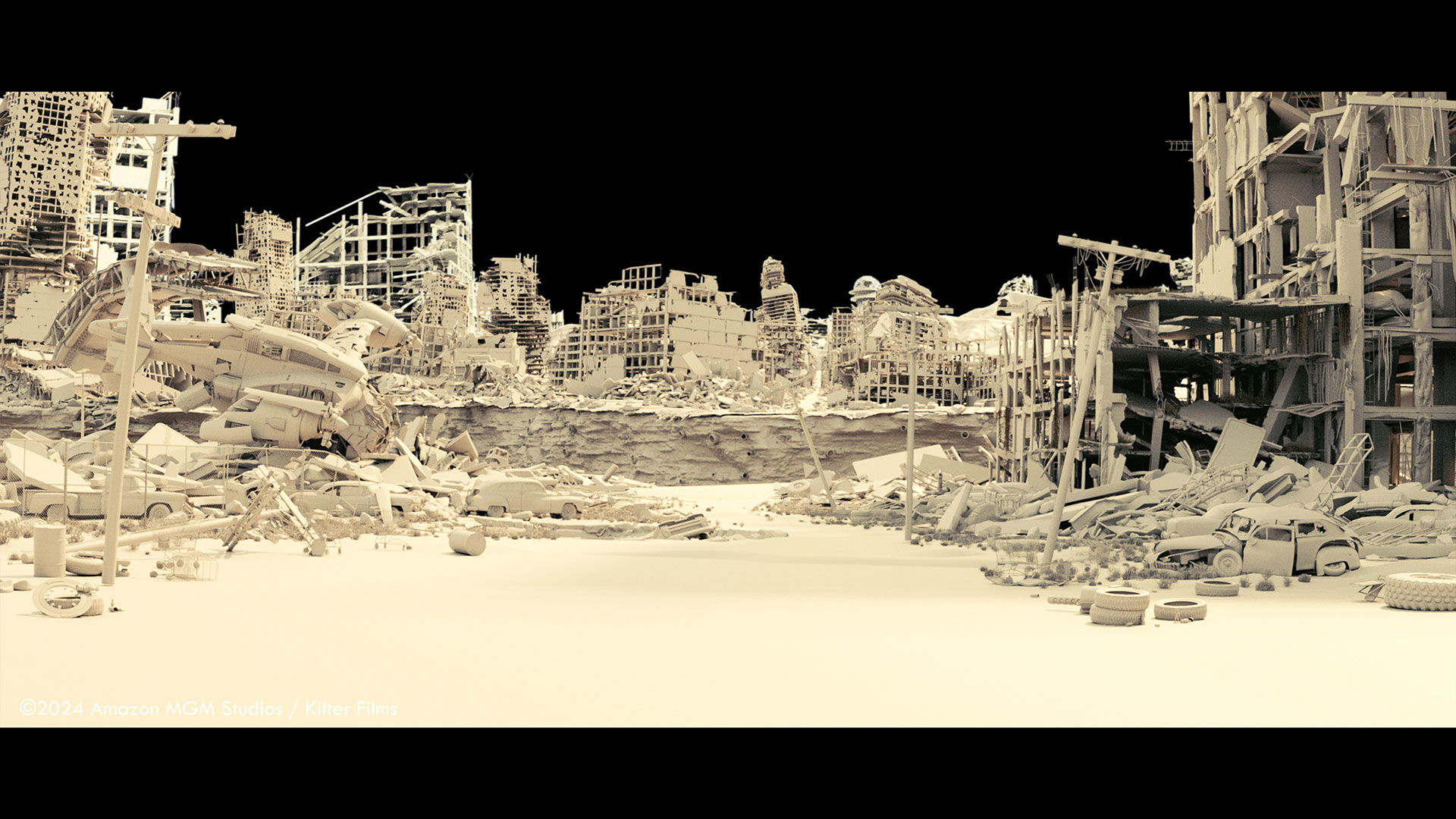
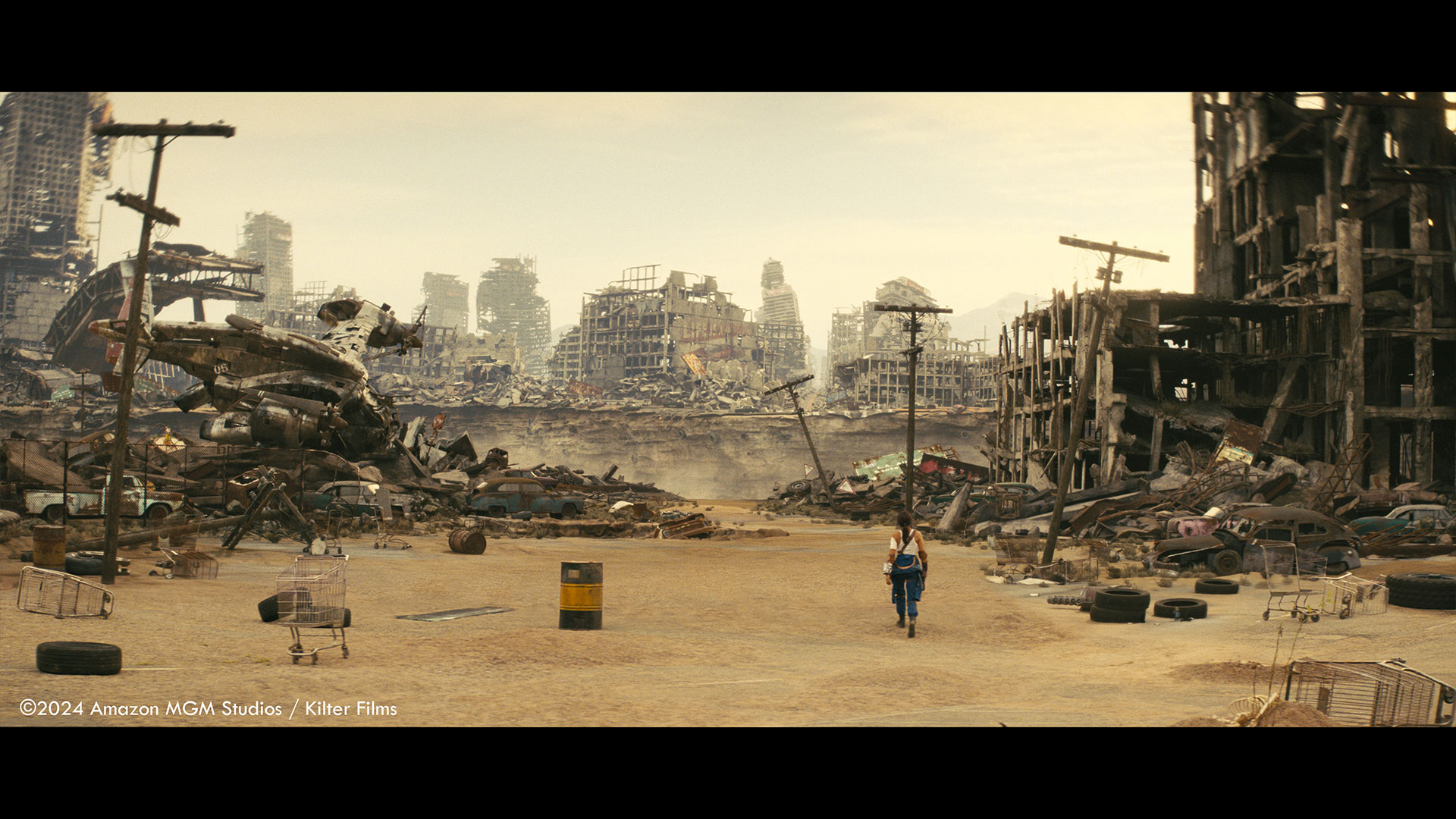
What techniques did you use to create the realistic movement and weight of the Power Armor in action scenes?
They surprisingly had a stuntman on the set with a jetpack on his arms flying through the air. It was a bit unconventional, but we were able to use the movement very well as a reference for the animation, and some of the dust and leaves that were kicked up are still real in the final shots. Integrating the CG armor made this approach a little more complex, but I would say the benefits outweighed the downsides.
For other shots we did motion capture sessions with our Xsense suits, for example when the power armor was just walking around. A little more tricky were the shots in Filly when the is a malfunction on the armor and not all of those shots had the jetpack guy as a reference. So we had to rely on classic keyframe animation as well.
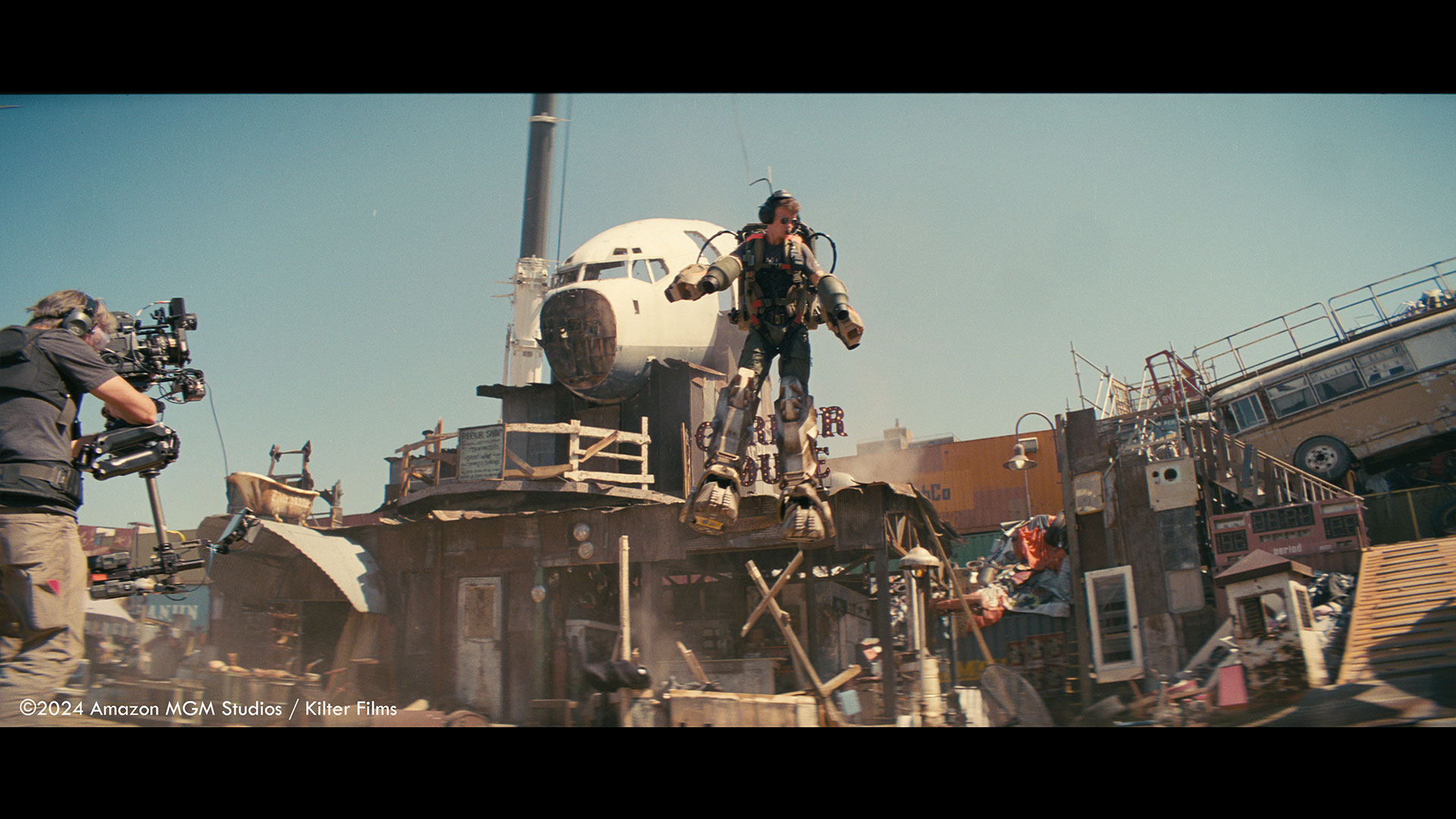
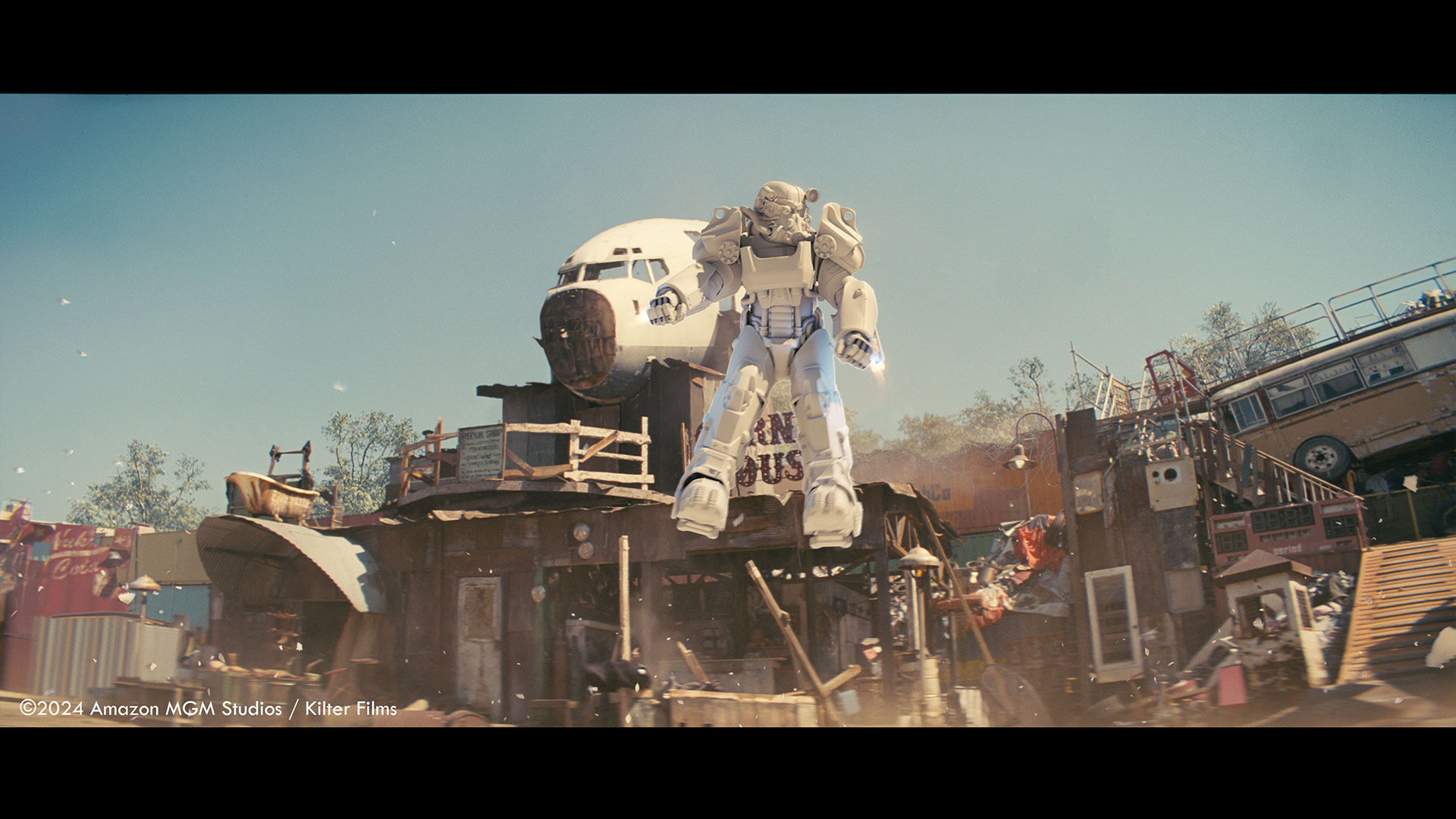
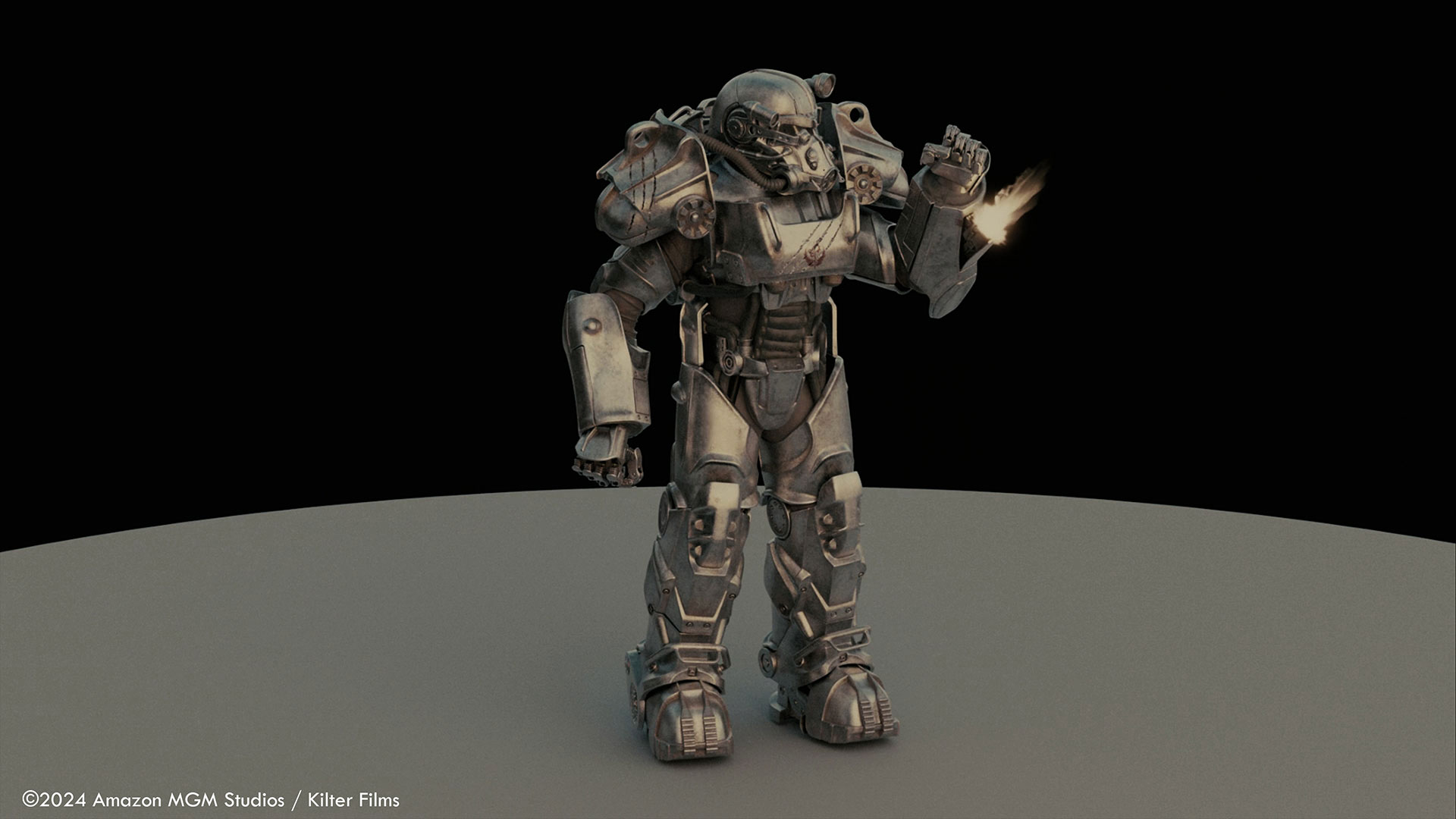
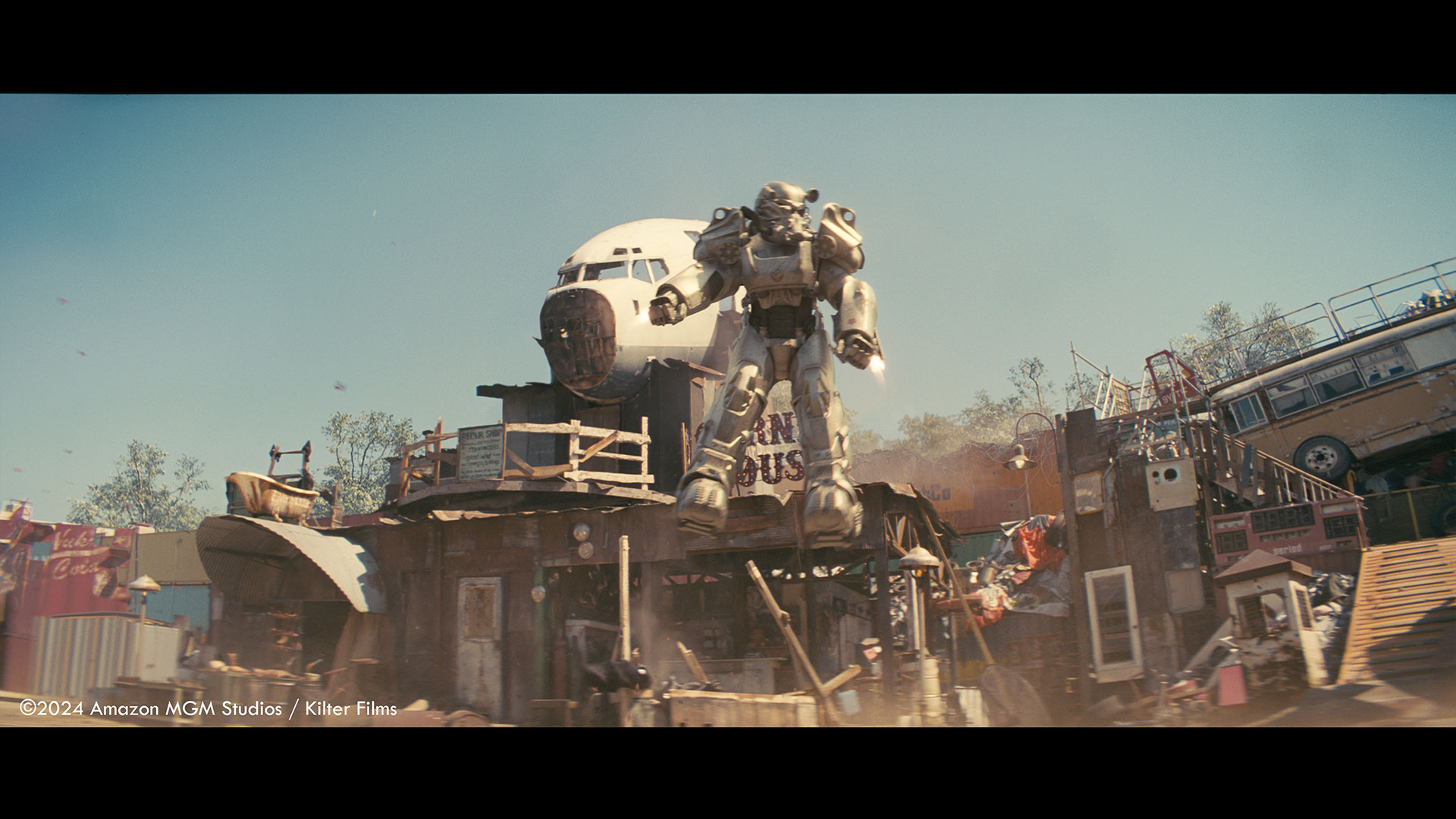
What were the key inspirations or references you drew from when designing the Vertibirds for the series?
In the beginning, we were given the model of the game and the concept art that had been created by the production department. So based on the lidar scan of the partial set build and tons of onset and game references, we started to create a highly detailed and complete version of it.
We also took the whole asset team on a trip to the “Technikmuseum” in Berlin. There you can find real airplanes and other vehicles from all centuries. The texture and shading references we collected there were invaluable for the realism of the assets.
In the end we created a few texture and decal variations of the vertibird to avoid any repetitions in the later shots featuring several vertibird attacking the Griffith Observatory.
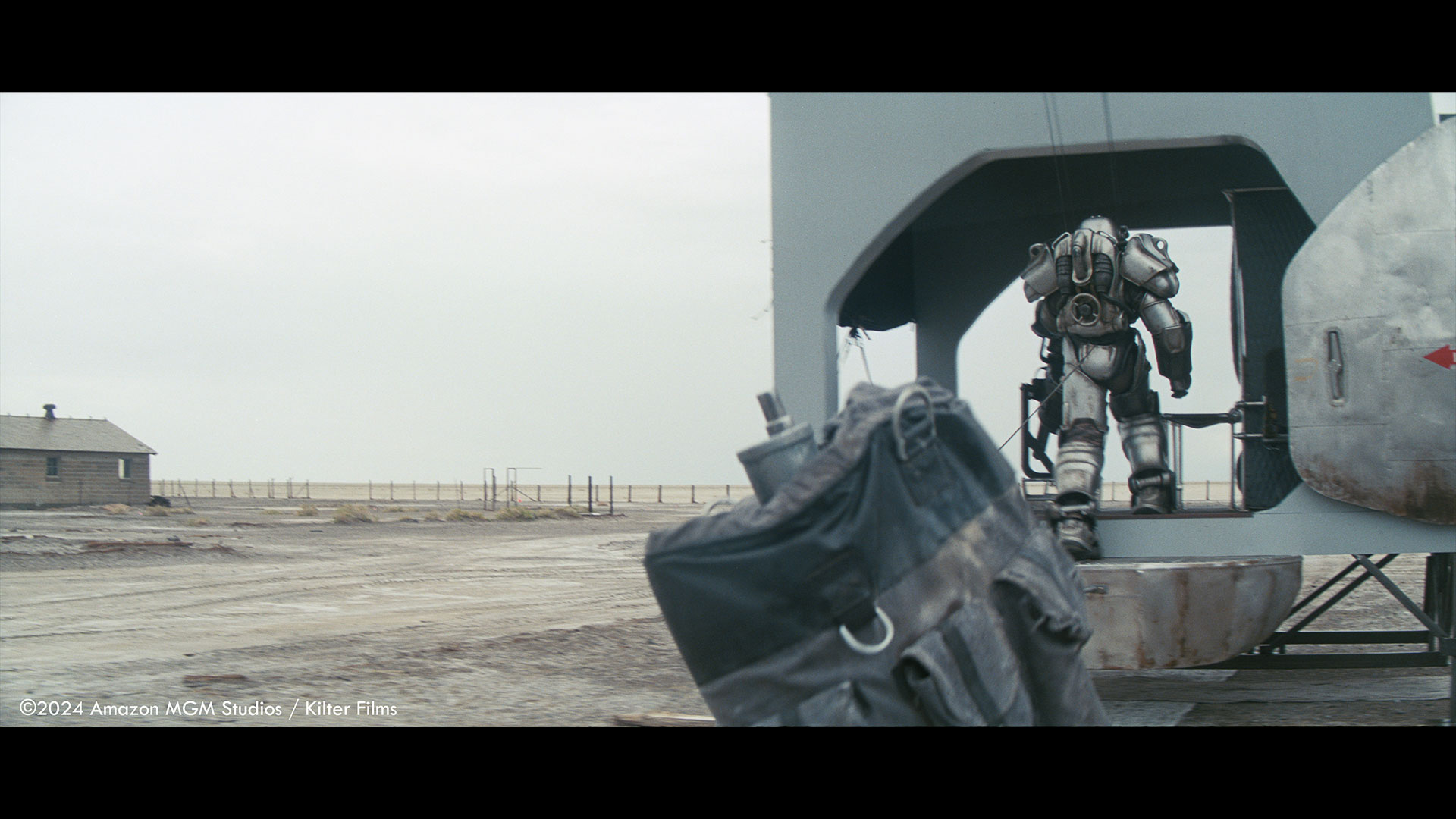
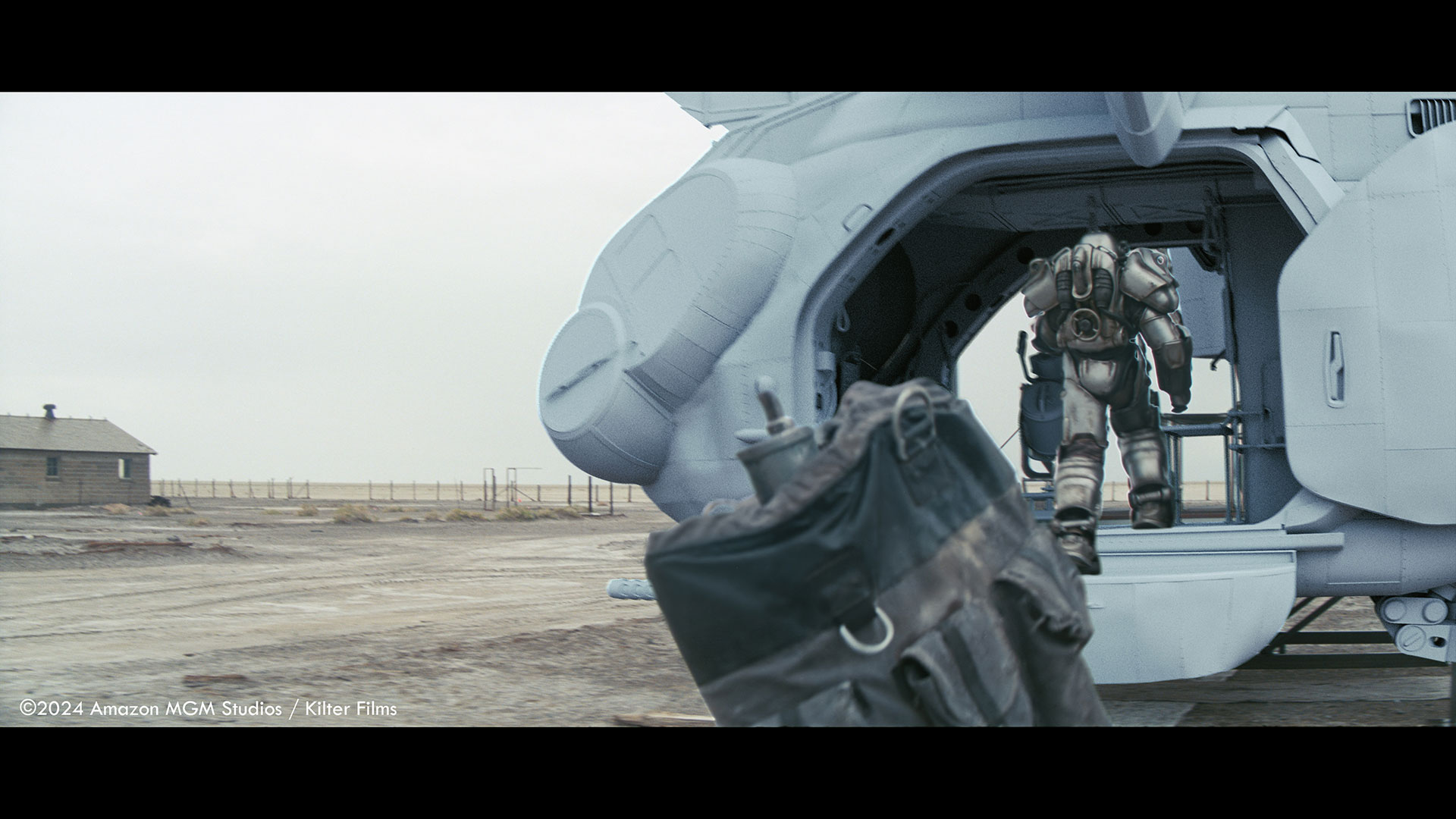
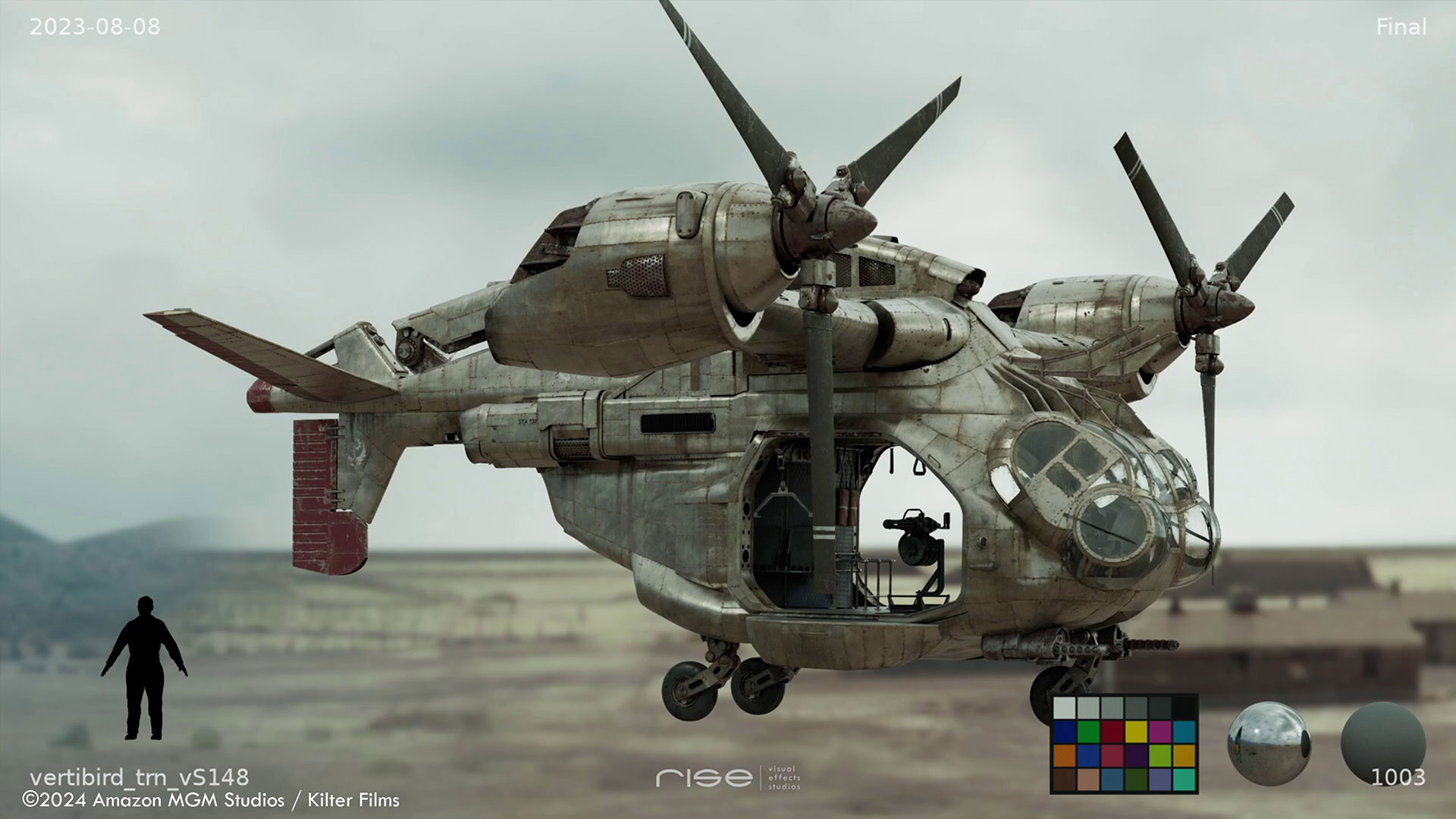
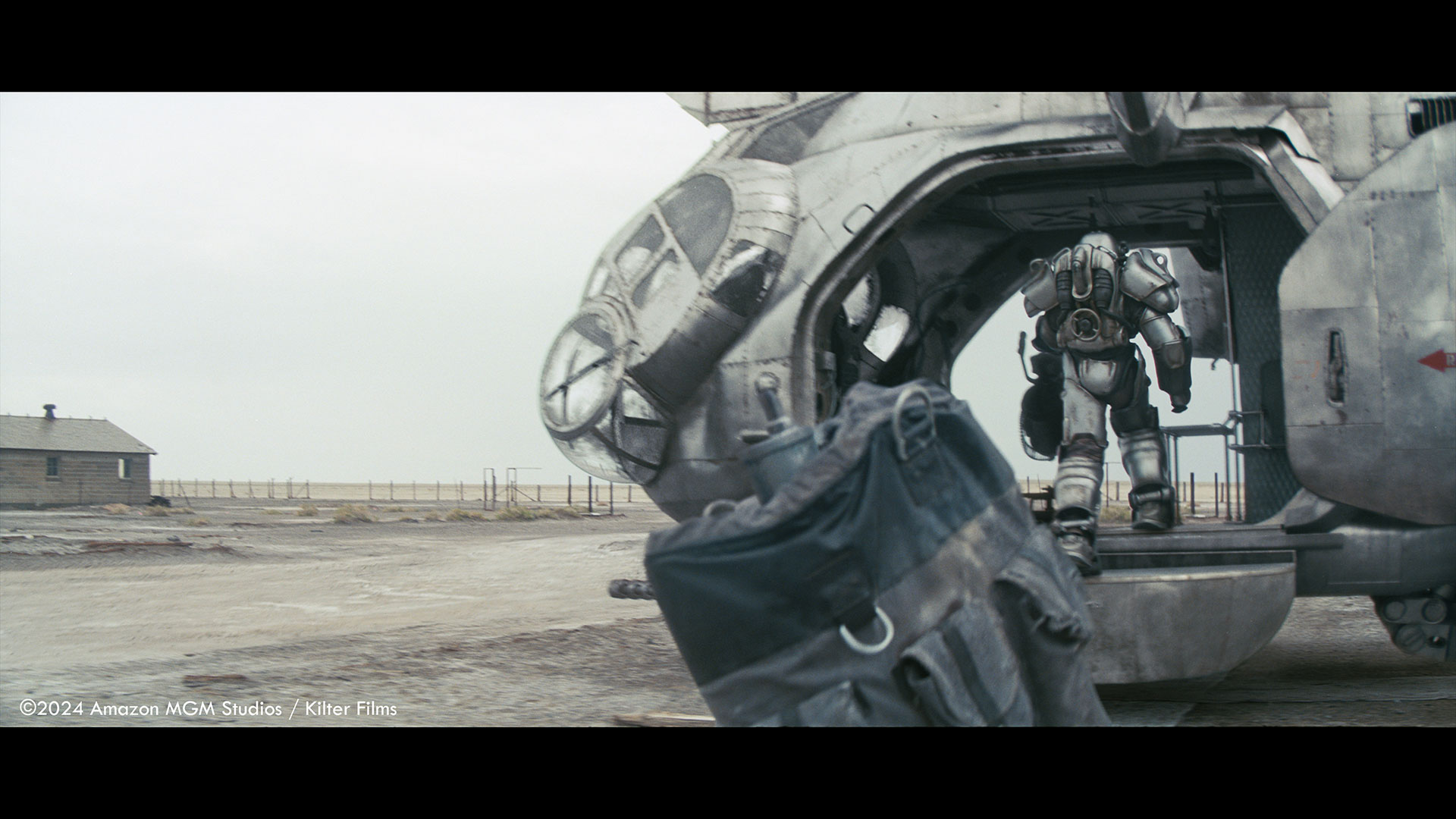
How did you balance the use of practical effects and CGI in bringing the Vertibirds to life on screen?
I really like the approach the production chose, to build a real version of the vertibird on set and to use it to shoot all the scenes taking place inside the Verti. To make the lighting look real and to capture several scenes even in camera, this partial Vertibird build was put in a LED stage provided by Magnopus.
So we took those plates and carefully added our CG elements to extend the vertibird to the full size. In most of the shots in which we added the complete CG vertibird there was a real helicopter in the plate which was quite helpful as a reference for animation and integration.
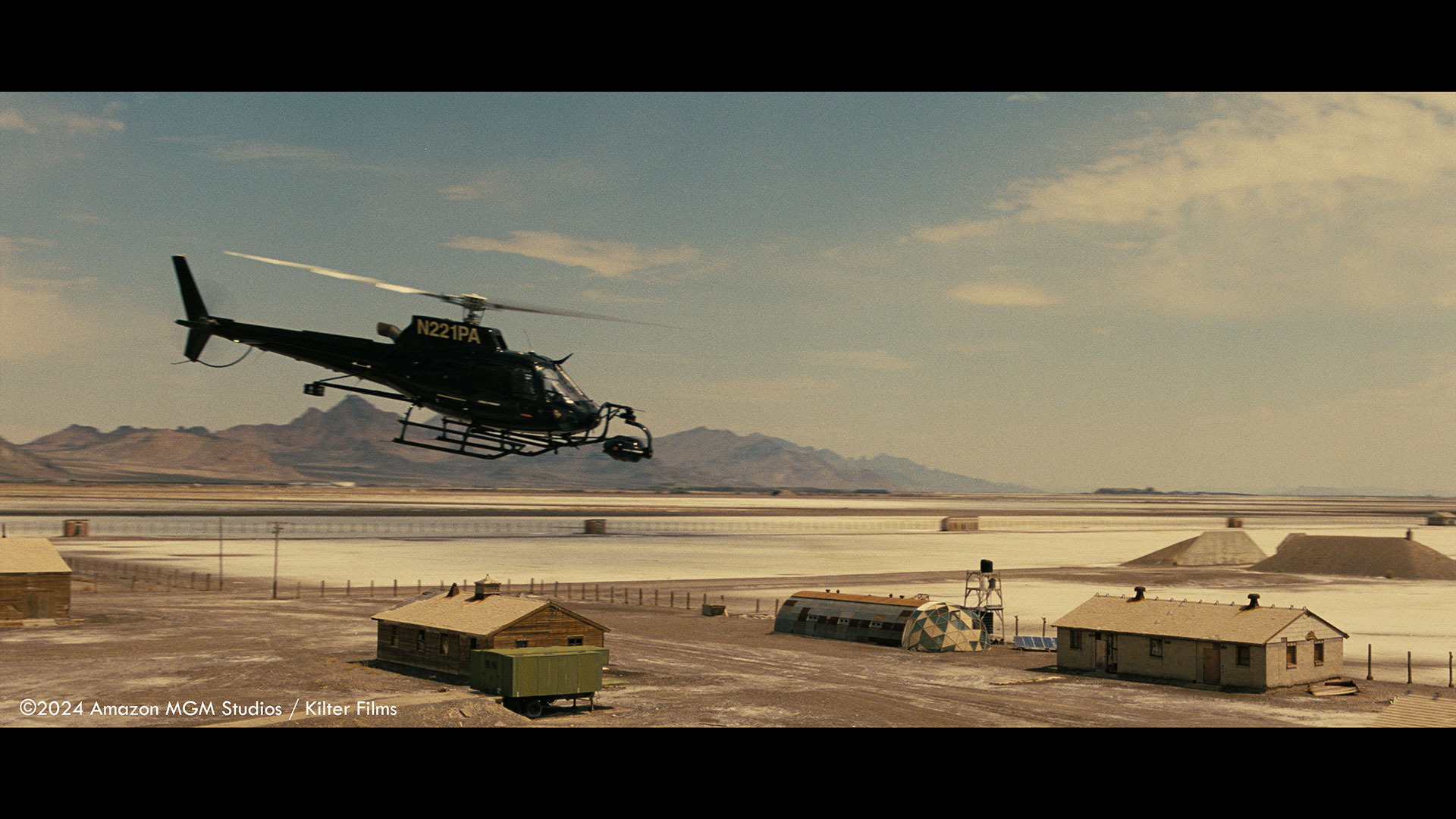
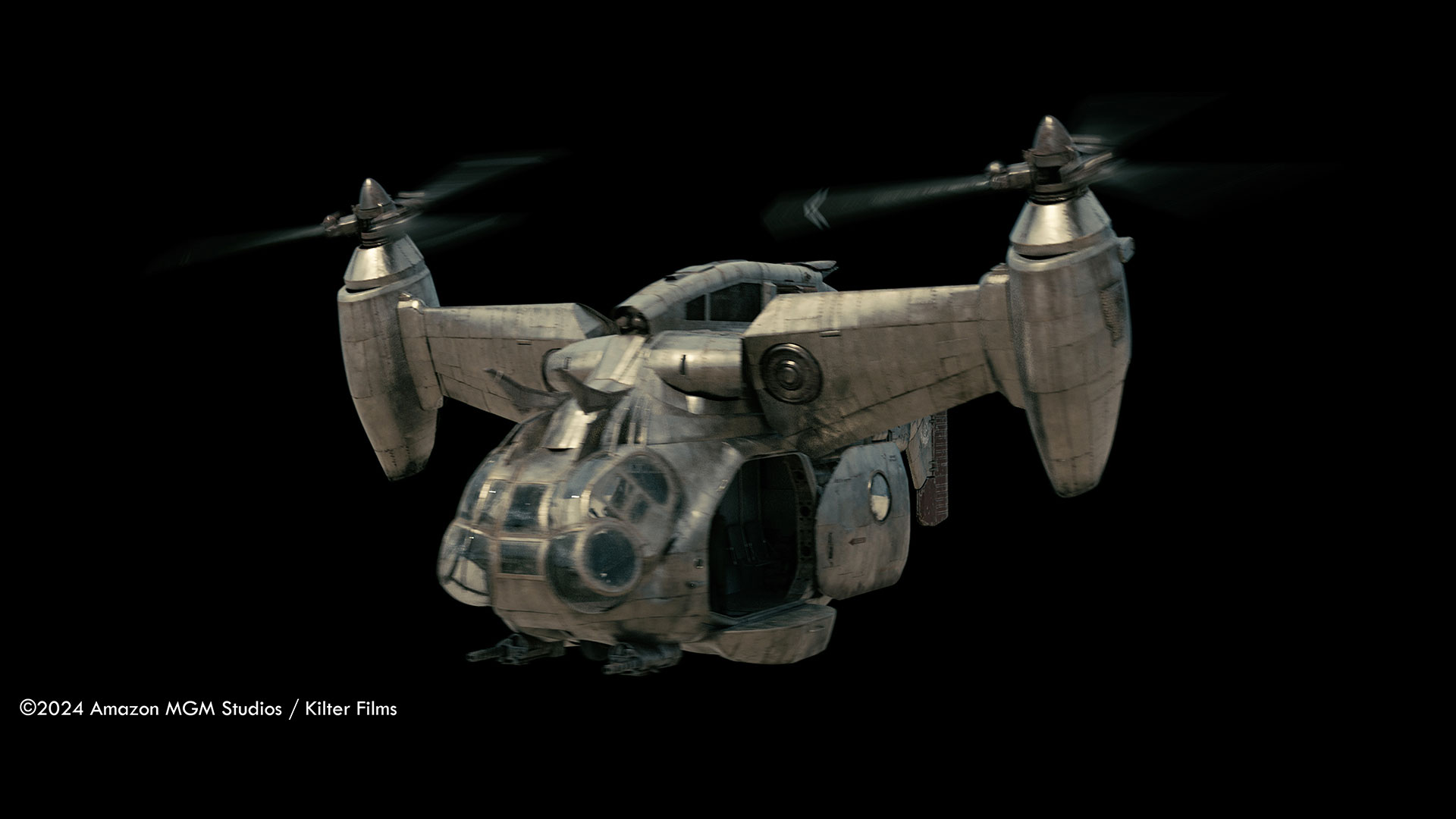
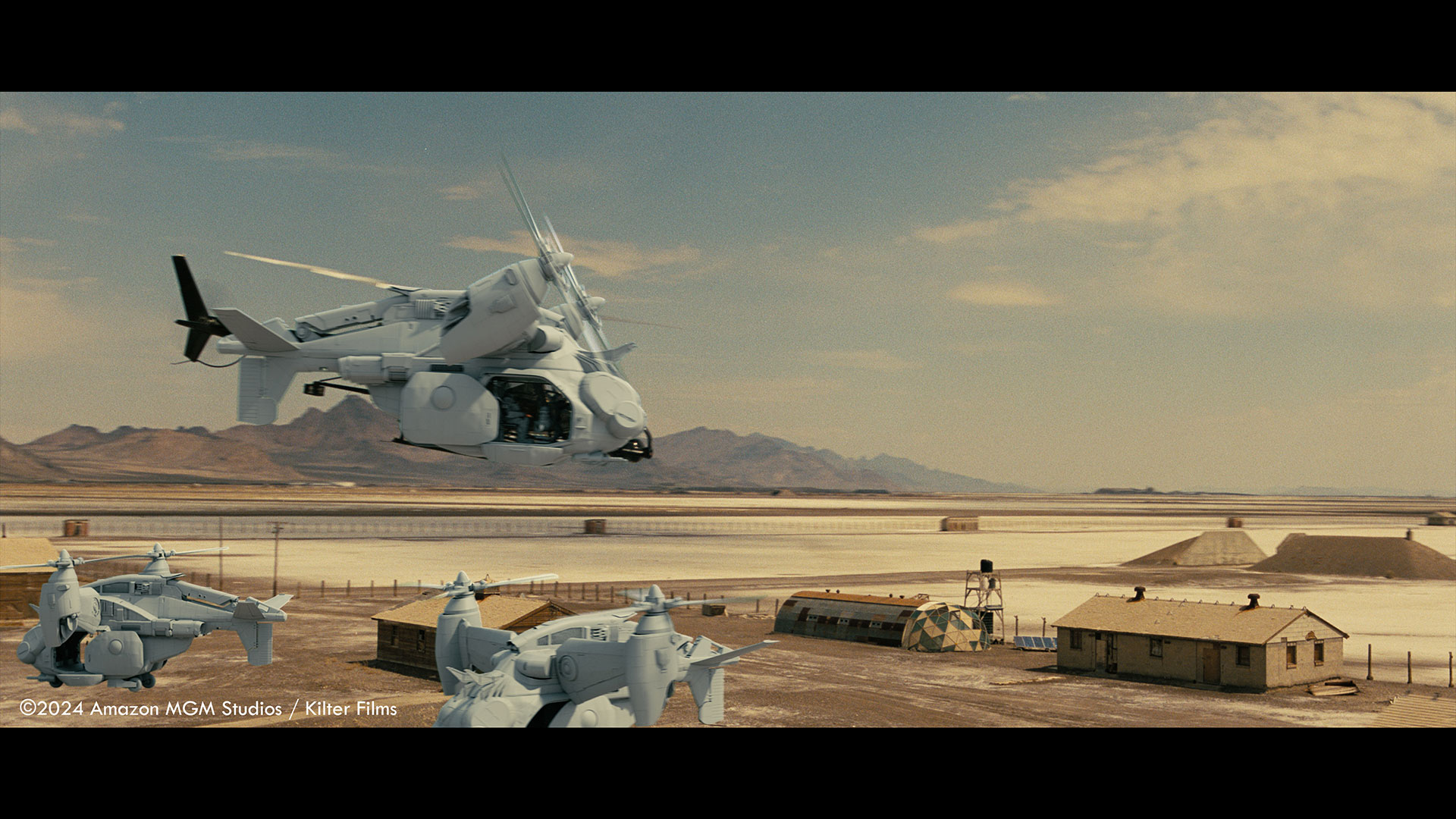
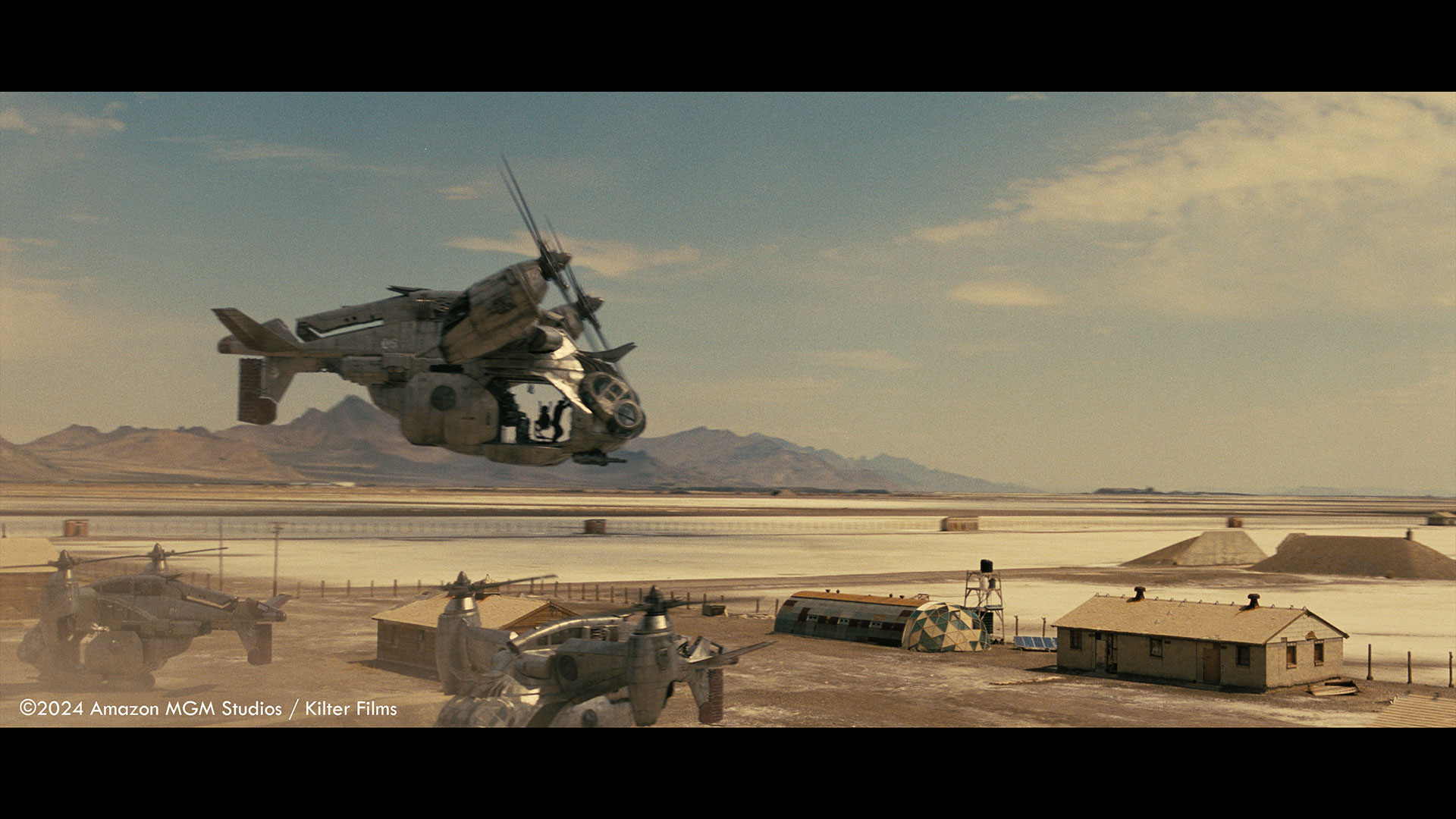
How did you handle the scale and detail required for the Power Armor and Vertibirds to ensure they looked convincing in both close-up and wide shots?
In addition to the amazing modeling and texturing detail created by our asset team and asset lead Josh Koilpillai, we also used several procedural approaches to add more detail while keeping the assets performant.
For example, we added thousands of small screws to each panel in Houdini. Because of the fully procedural setup, there was no need for manual adjustments, even if modeling changed some of the panels. Rigging and animation also did not have to deal with them as they are in a separate layer, keeping everything lightweight. Thanks to our start-to-end USD pipeline, the parent transformation of the panels is automatically applied to all the bolts when they are layered on top of the other layers.
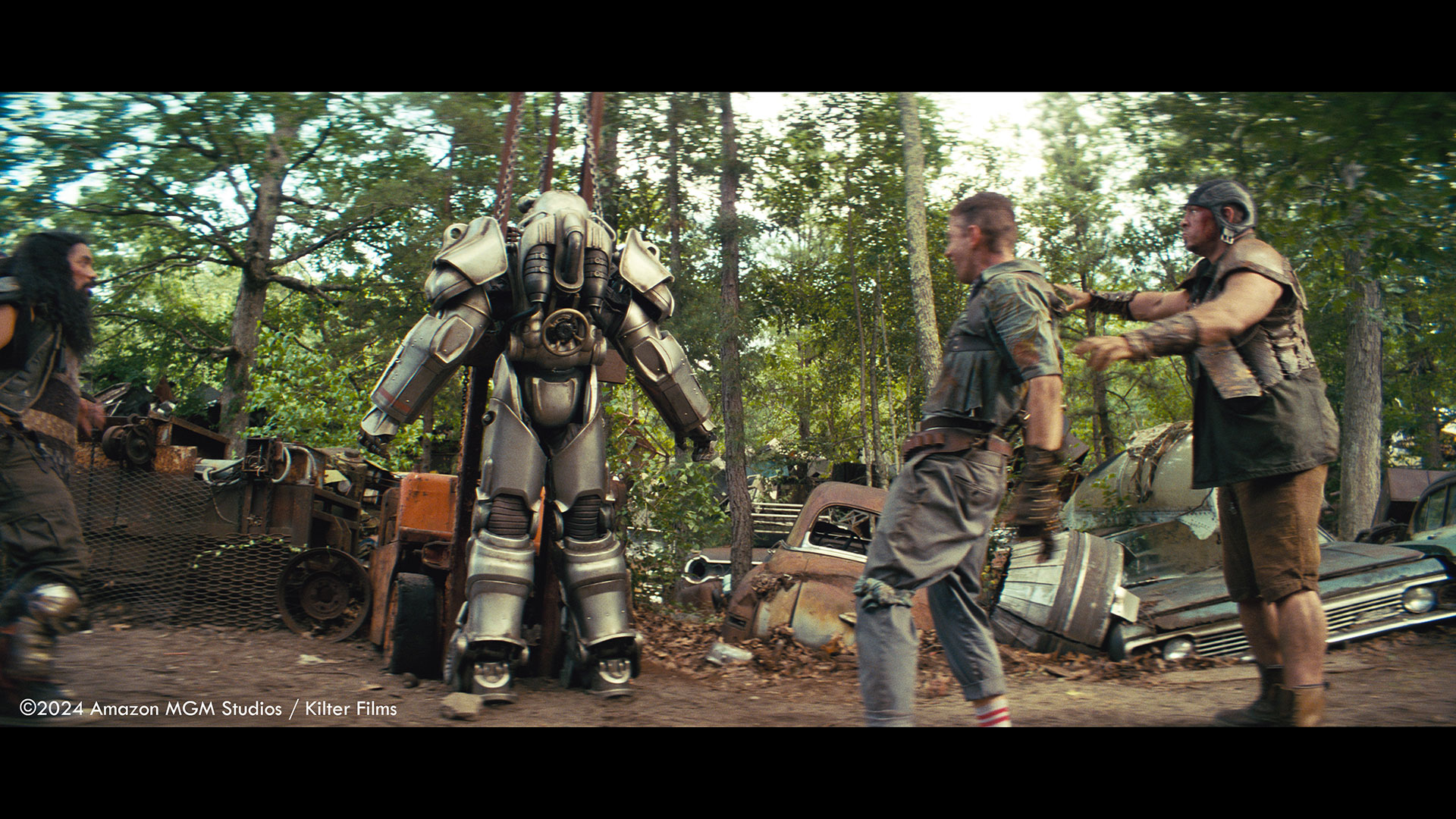
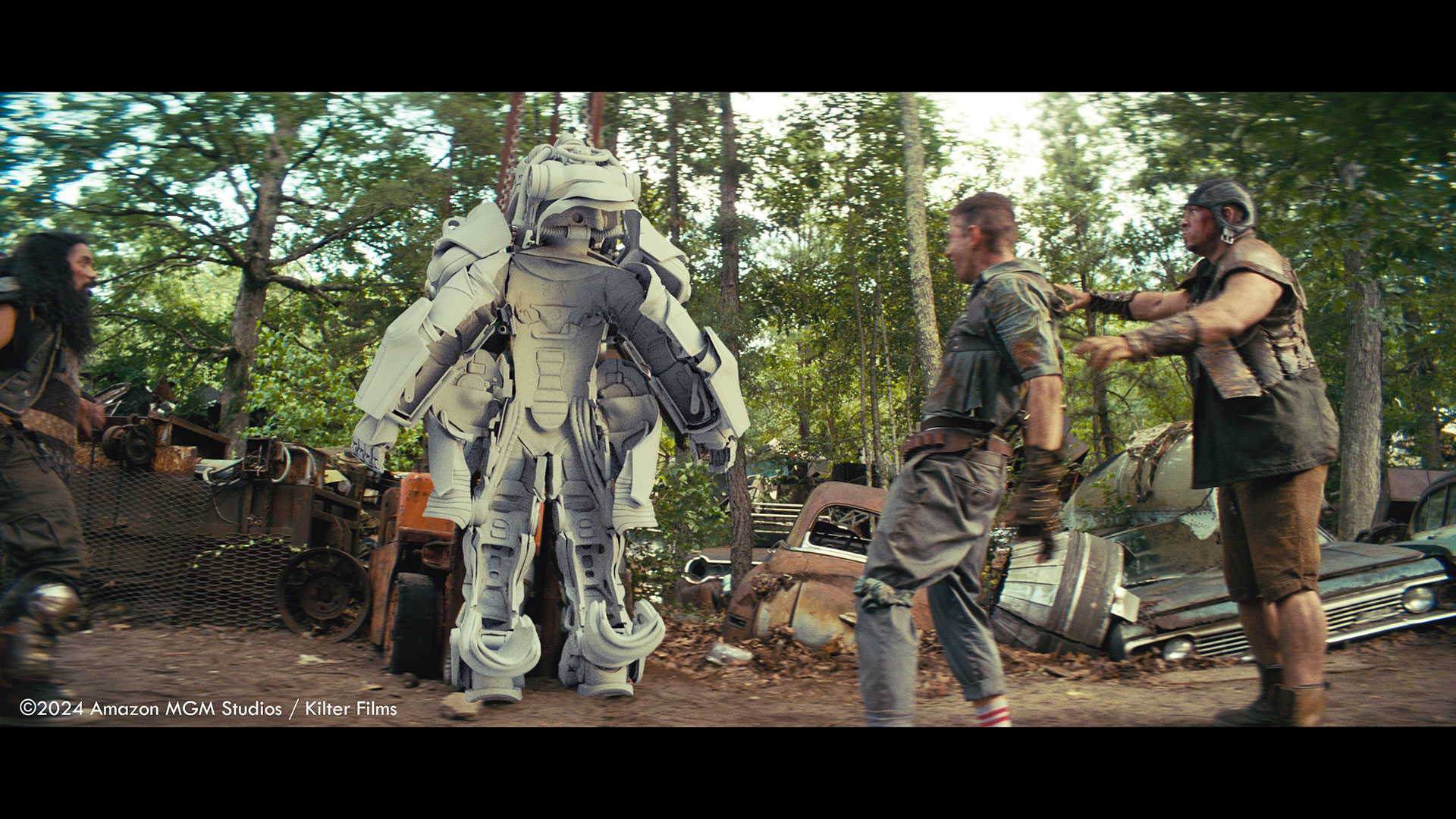
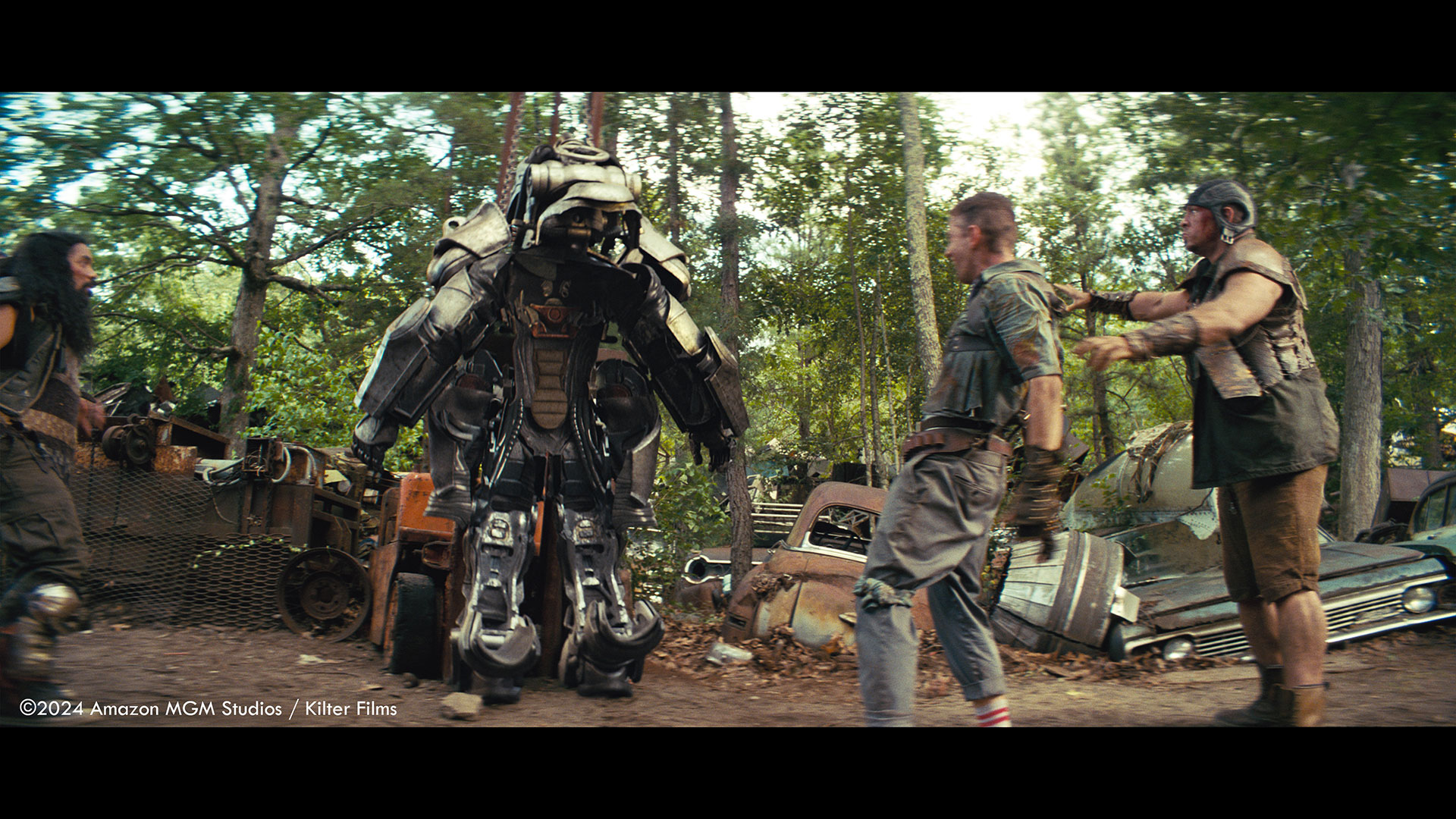
Can you share any interesting or unexpected challenges you encountered during the creation of these iconic pieces of Fallout technology?
Not really a challenge, but an interesting detail was, that we had to avoid any dirt or effects related to combustion or exhaust emissions, since in the world of Fallout there is no more gas and everything is nuclear powered.
Were there any memorable moments or scenes from the series that you found particularly rewarding or challenging to work on from a visual effects standpoint?
My favorite sequence is the final battle sequence, as it starts quite epic with the vertibirds flying towards the observatory and then the attack begins with cool aerial explosions and slow-mo fighting shots on the plaza.
I like the pacing of this seq a lot and even though some of those shots are nearly full CG, they are all based on real drone plates. So it’s all grounded in reality and I think because of that its feels quite real and combines seamlessly to this intense experience. And this rewarding combination of real elements that set the tone and realism combined with seamlessly integrated VFX you can find throughout the whole series.
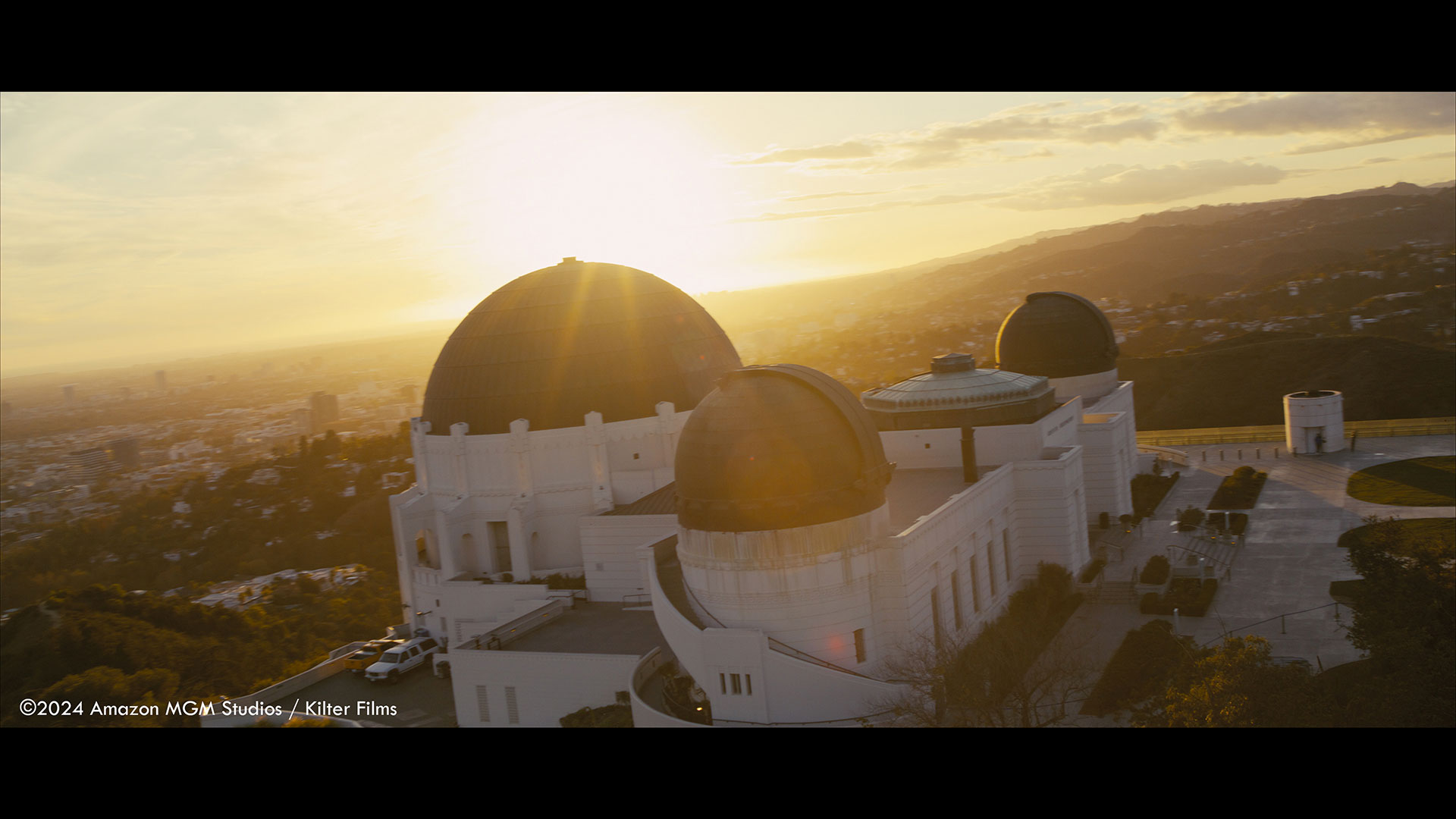
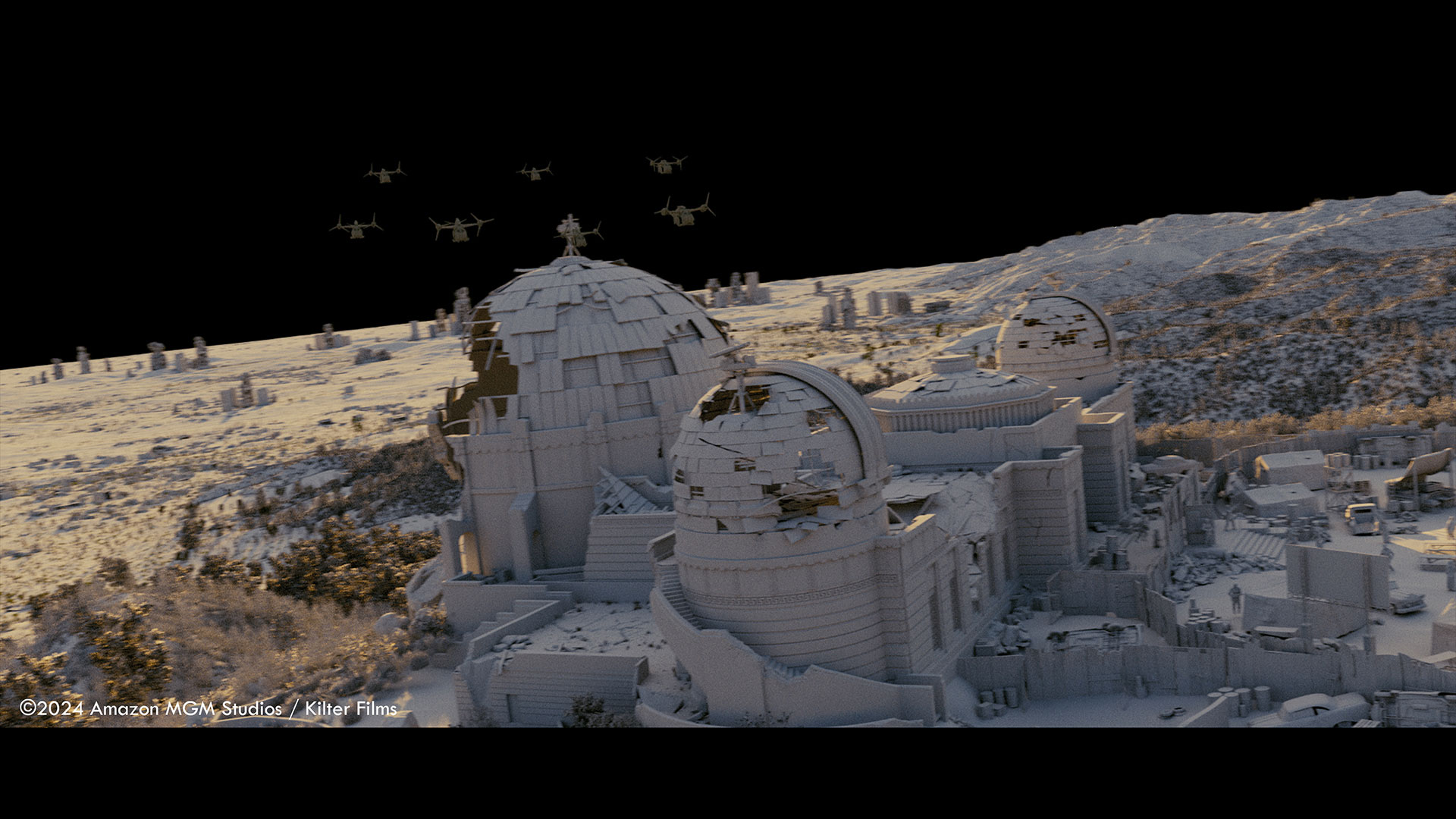
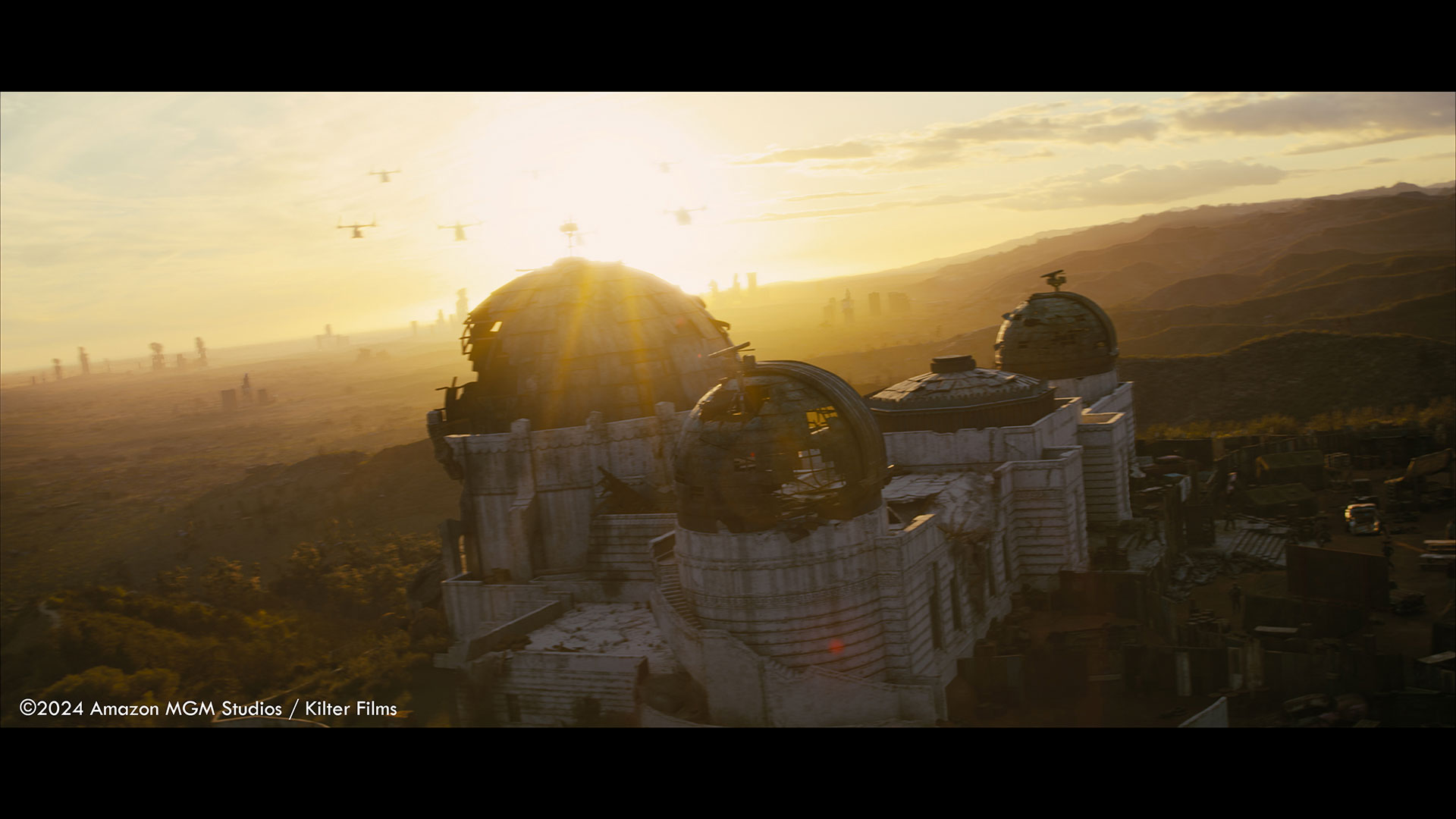
Looking back on the project, what aspects of the visual effects are you most proud of?
I am quite proud of the wide variety of different effects we have been able to create at this level. Usually there are shows with a focus, like set extensions or complex FX simulations or character work.
But working on the Fallout series, we had all of those challenges combined into one massive project. That made it extremely challenging, but also very interesting and motivating.
So what I am most proud of is our team, all the artists, coordinators and people in the other departments who created or made it possible for us to create all these amazing effects. Only when each department works seamlessly with the others is it possible to take a shot from great to amazing. And that just the case with an brilliant team, from intern to supervisor.
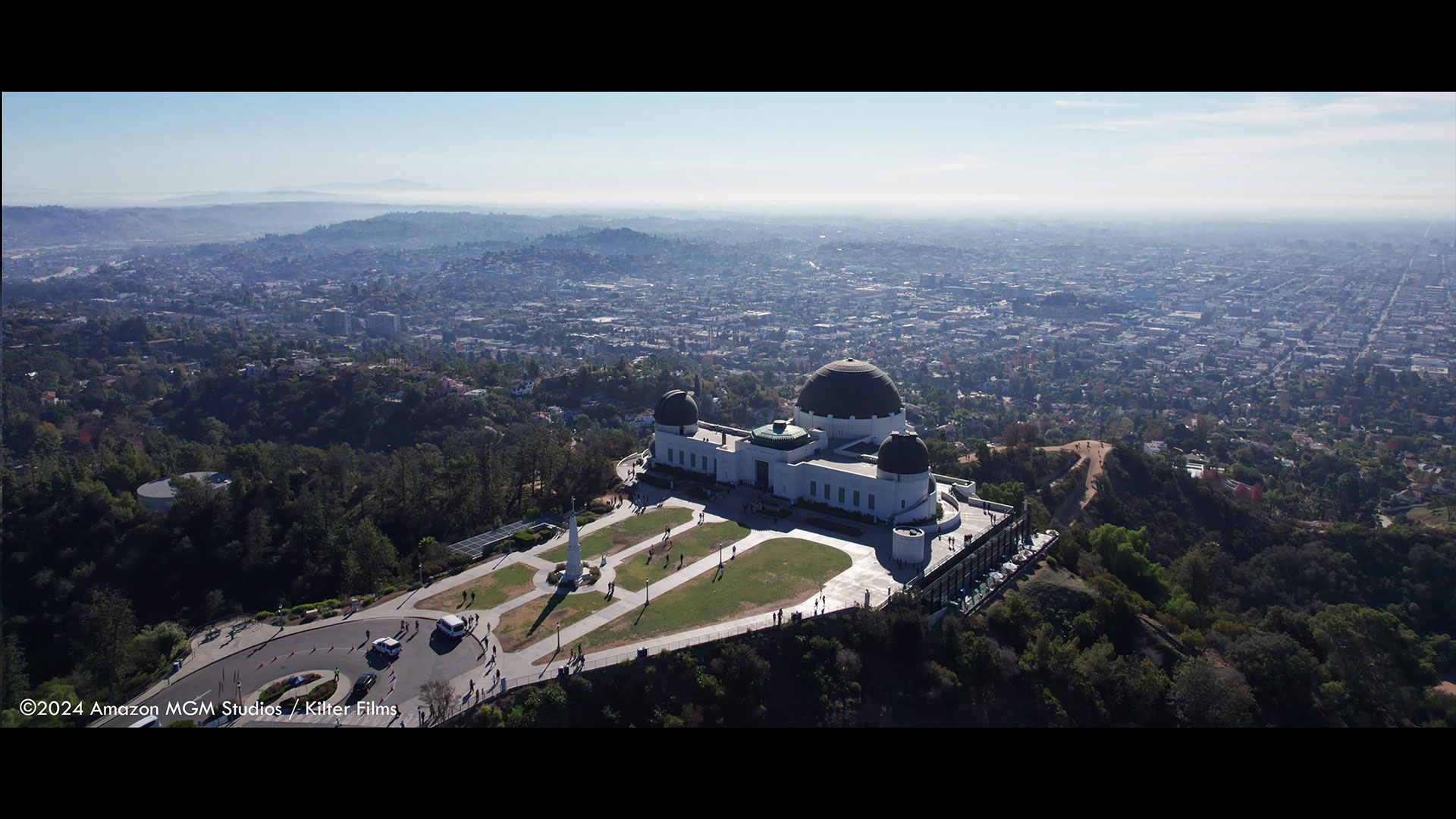
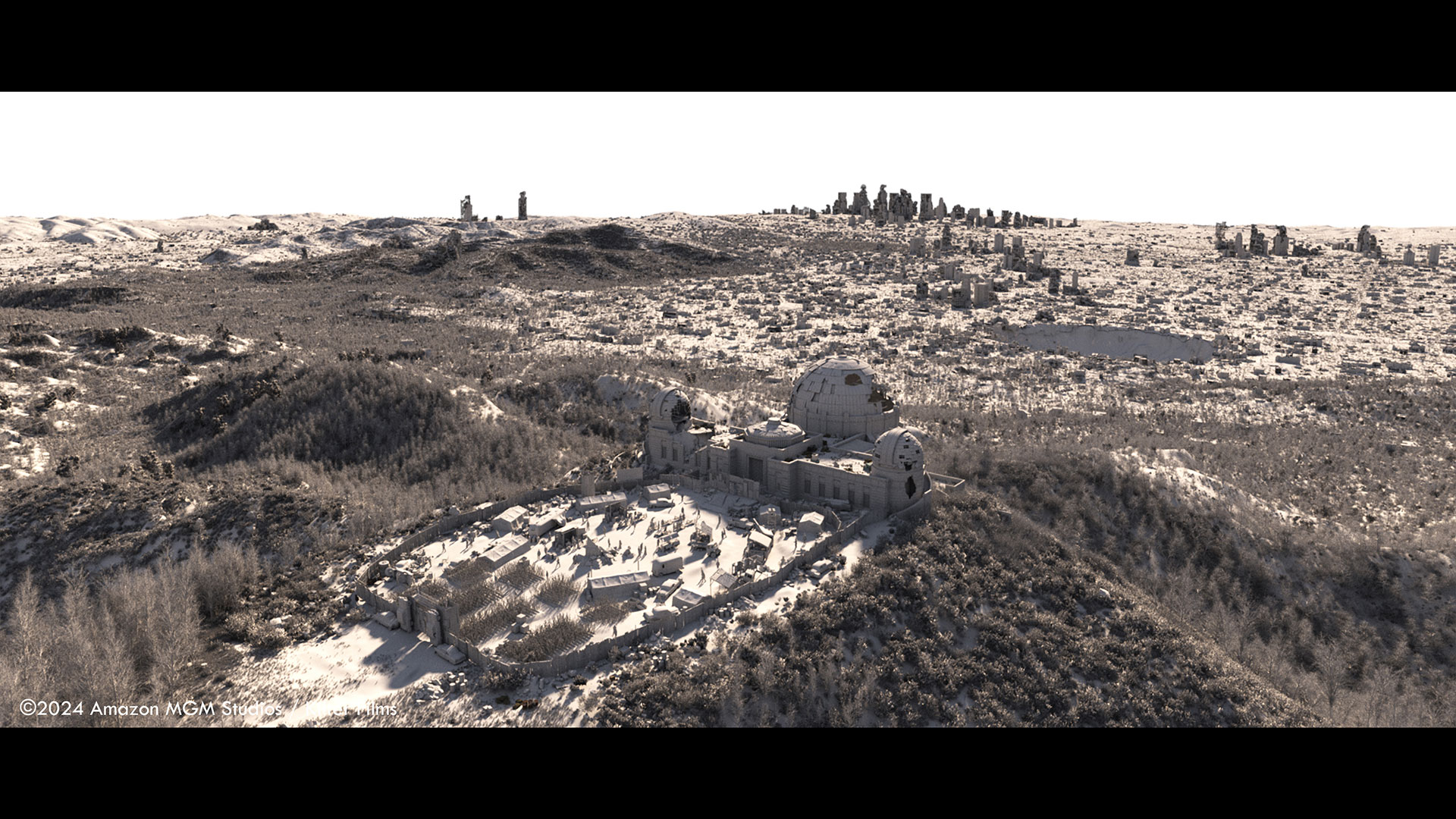
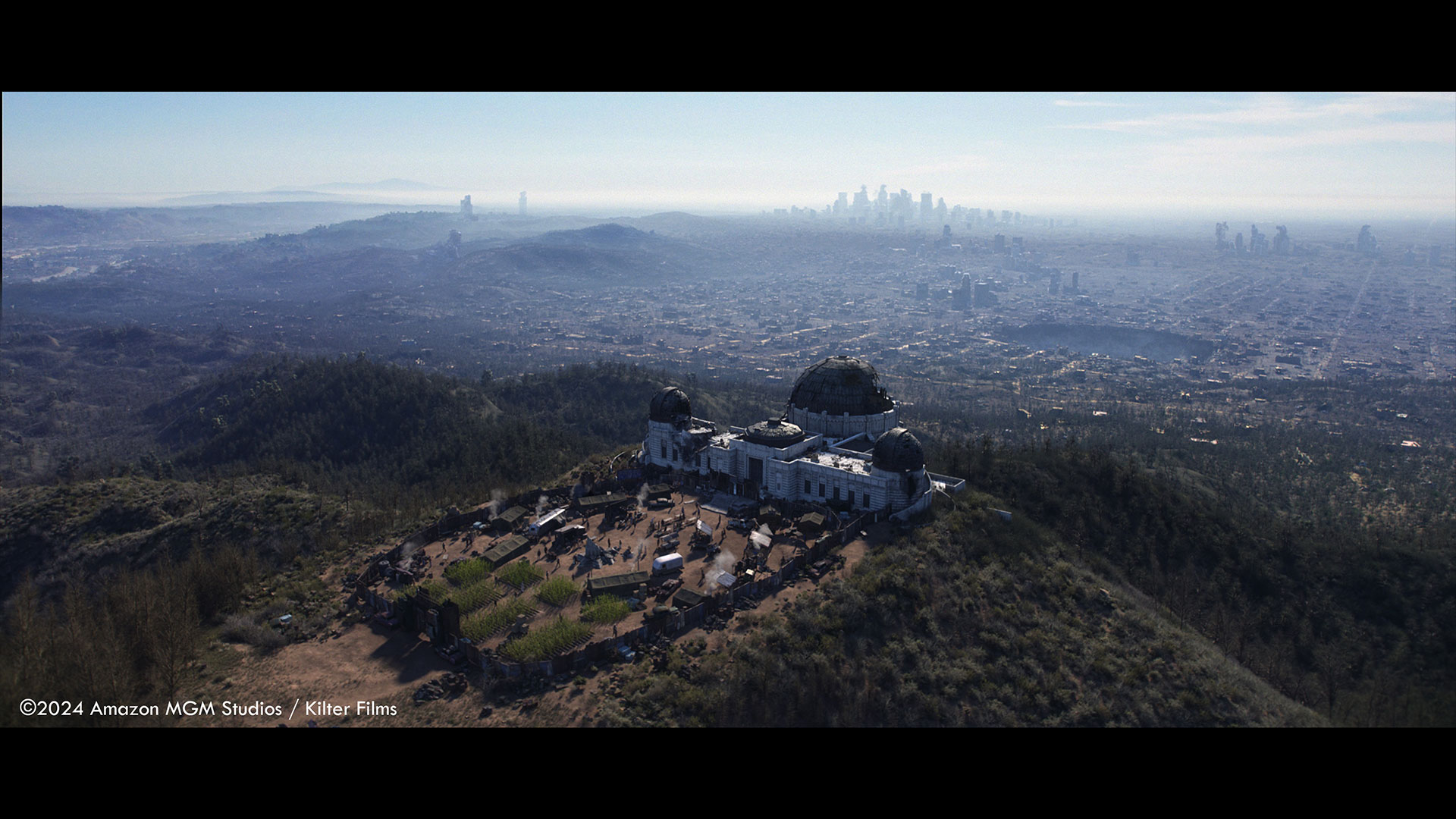
Tricky question, what is your favorite shot or sequence?
Definitely not an easy question! Maybe we can agree that I can pick a favorite shot for each category?
My favorite environment shot is the Shady Sands crater establishing shot in episode 5. I really love the reveal moment and the detail that went into that shot. Our layout team did a great job here, and the integration of the CG layers with all the lens effects was so well done by the compositing team, supervised by Jonathan Heine.
As for our vehicles, it’s the shot in the second episode where we see the Vertibird take off from the Brotherhood base. This is the first time you see the Vertibird in all its detail, it’s almost like a turntable.
My favorite effects shot is in the last episode. The Vertibirds fly the attack on the observatory, we have the camera inside with Max and through the window we see the Vertibird in front of us being hit by a missile and exploding. From animation to FX to lighting to compositing, everything was put into this shot.
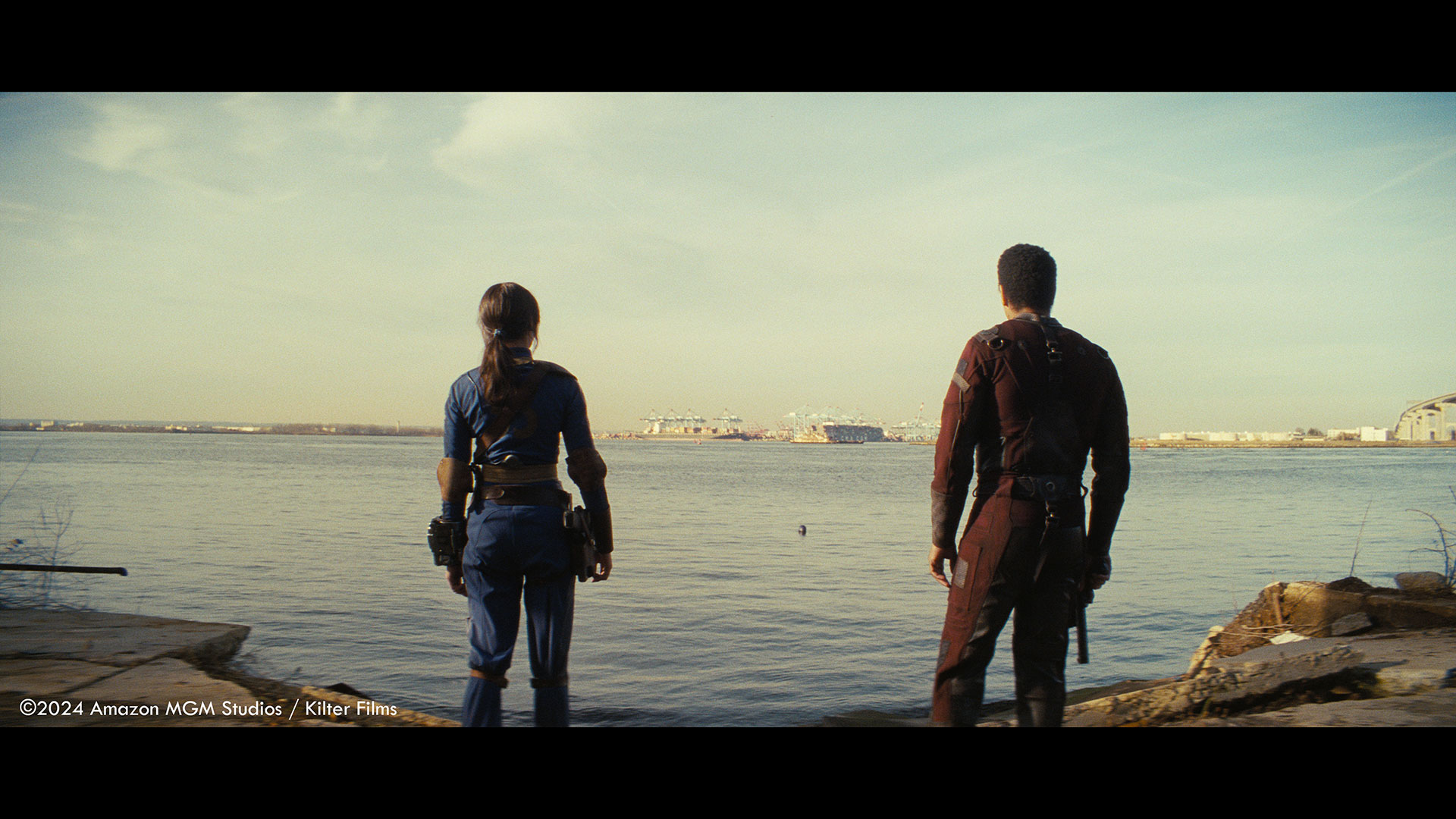
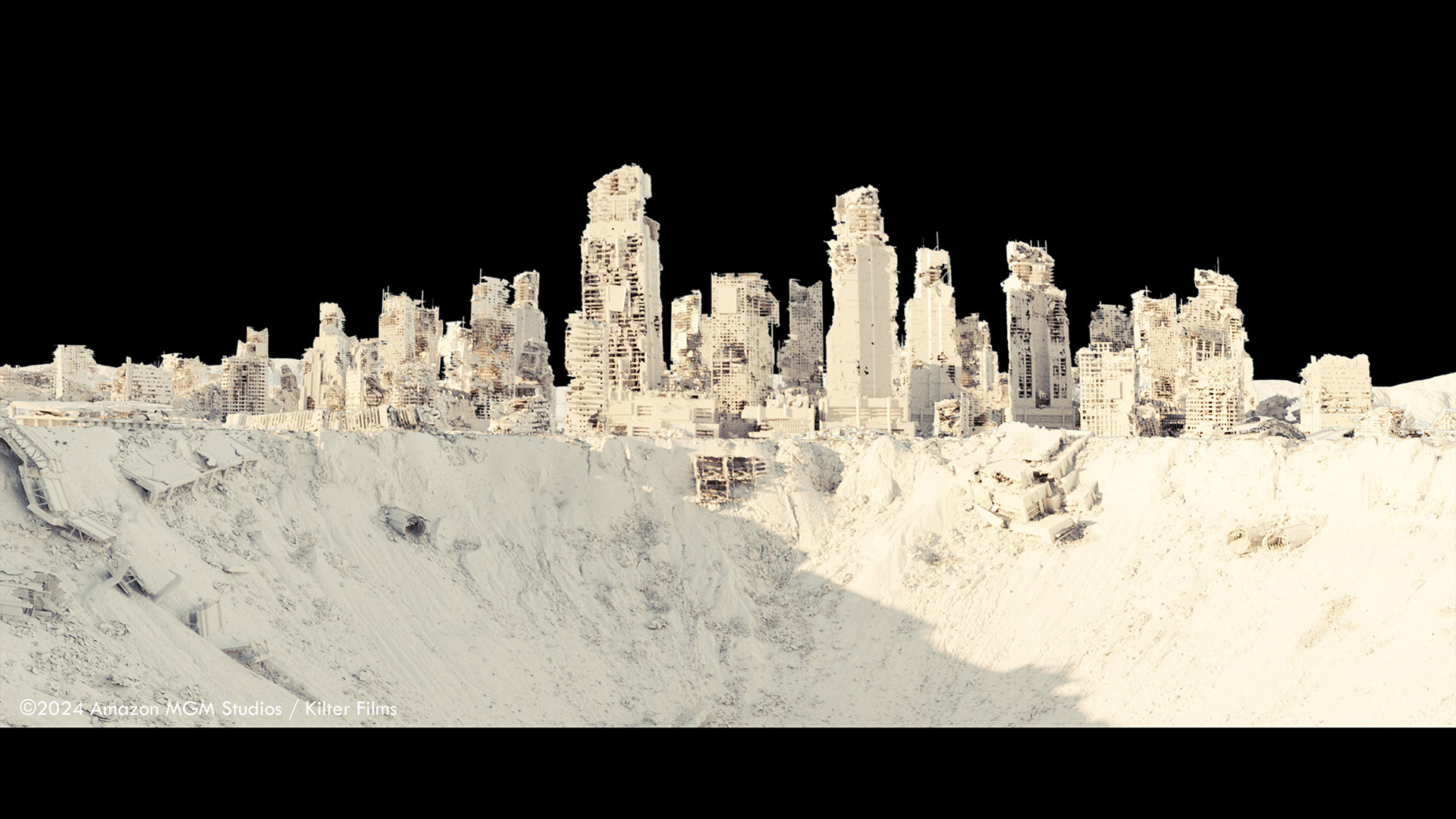
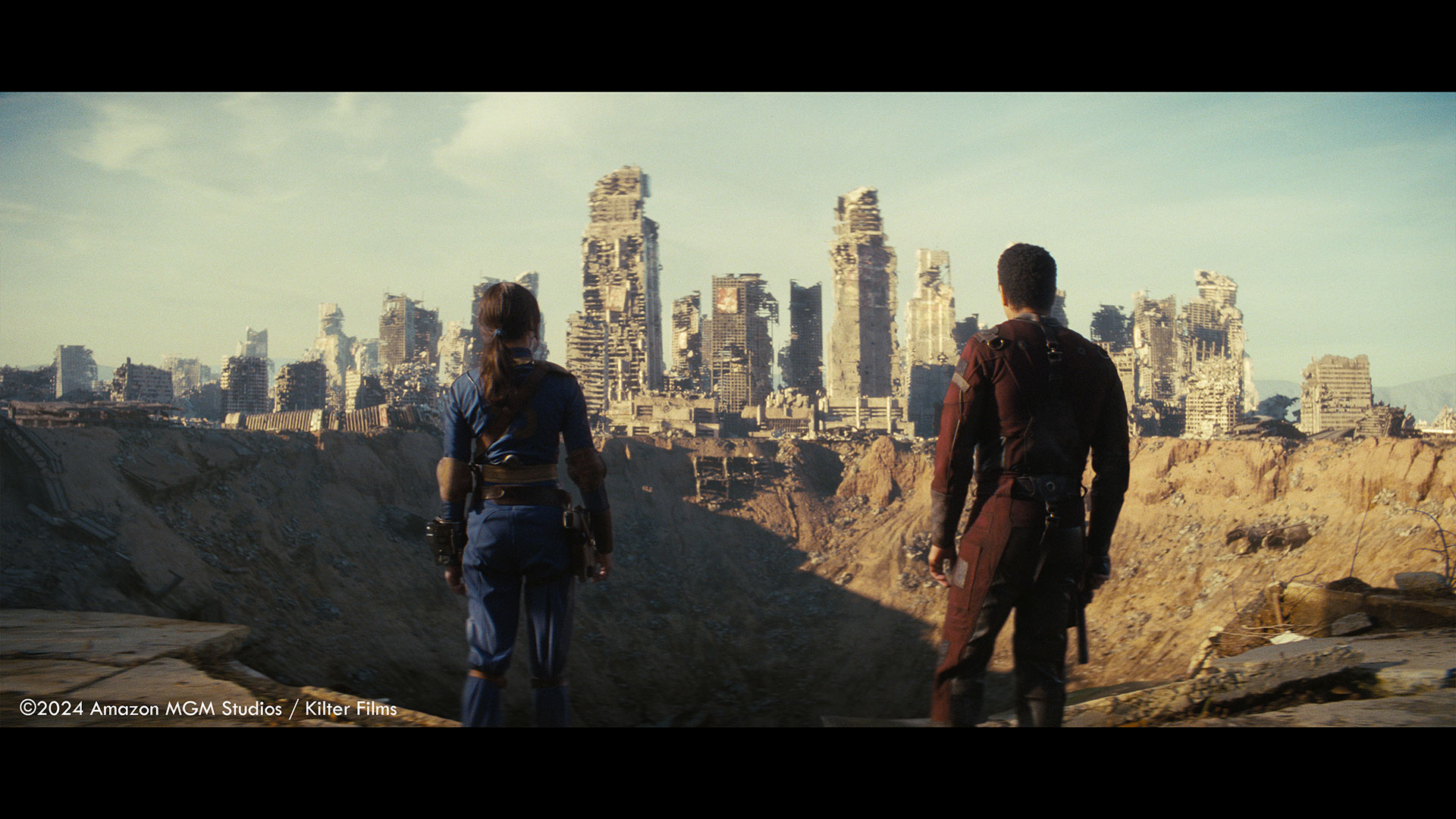
How long have you worked on this show?
Overall, the show ran at RISE for nearly a year and a half. We started in late 2022 and delivered the last shot in April 2024.
What’s the VFX shots count?
We worked on about 400 shots in total, spread across all eight episodes.
What is your next project?
Unfortunately, it is a bit early to talk about this, but I am quite exited already.
A big thanks for your time.
WANT TO KNOW MORE?
RISE: Dedicated page about Fallout on RISE website.
Jay Worth: Here’s my interview of Production VFX Supervisor Jay Worth.
© Vincent Frei – The Art of VFX – 2024




